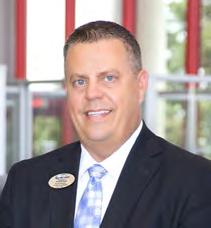SLEEP APNEA: WHAT YOU NEED TO KNOW FUN HIKING ADVENTURES WITH THE KIDS


SLEEP APNEA: WHAT YOU NEED TO KNOW FUN HIKING ADVENTURES WITH THE KIDS


Back and neck pain happen for a number of reasons. Muscular weakness, herniated discs, damaged vertebrae or more severe spinal conditions can all make pain severe and debilitating.
At Texas Health Presbyterian Hospital Flower Mound, our dedicated team of spinal physicians, therapists and practitioners are skilled at treating back and neck pain and spinal disorders.
Advanced technology and minimally invasive techniques are used to e ciently and e ectively treat conditions, address pain and get you back to doing what you love.
For more information or to schedule a consultation, please call 469-929-9497 or visit the Program’s website at https://www.texashealthflowermound.com/back-neck-and-spine-center/
Texas Health Presbyterian Hospital Flower Mound is a joint venture owned by Texas Health Resources and physicians dedicated to the community and meets the definition under federal law of a physician-owned hospital. Doctors on the medical sta practice independently and are not employees or agents of the hospital. Model in photo is not an actual patient.

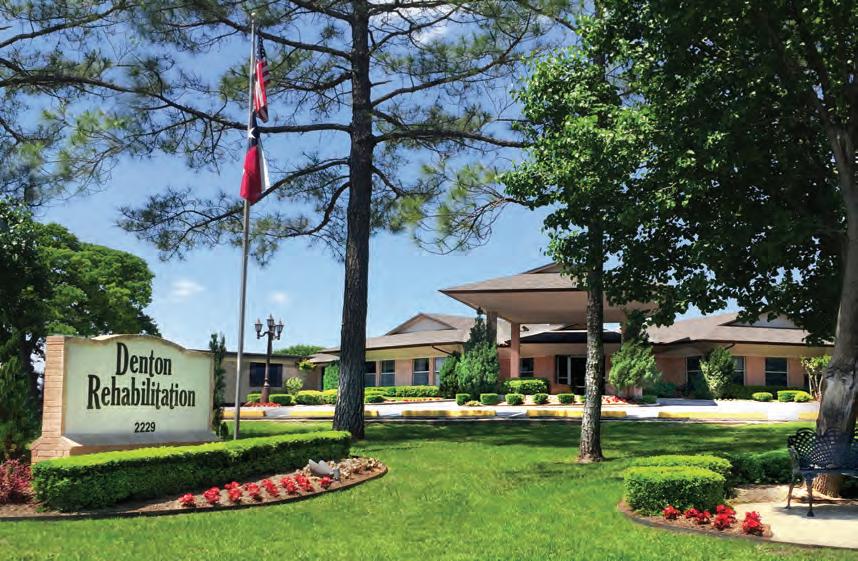



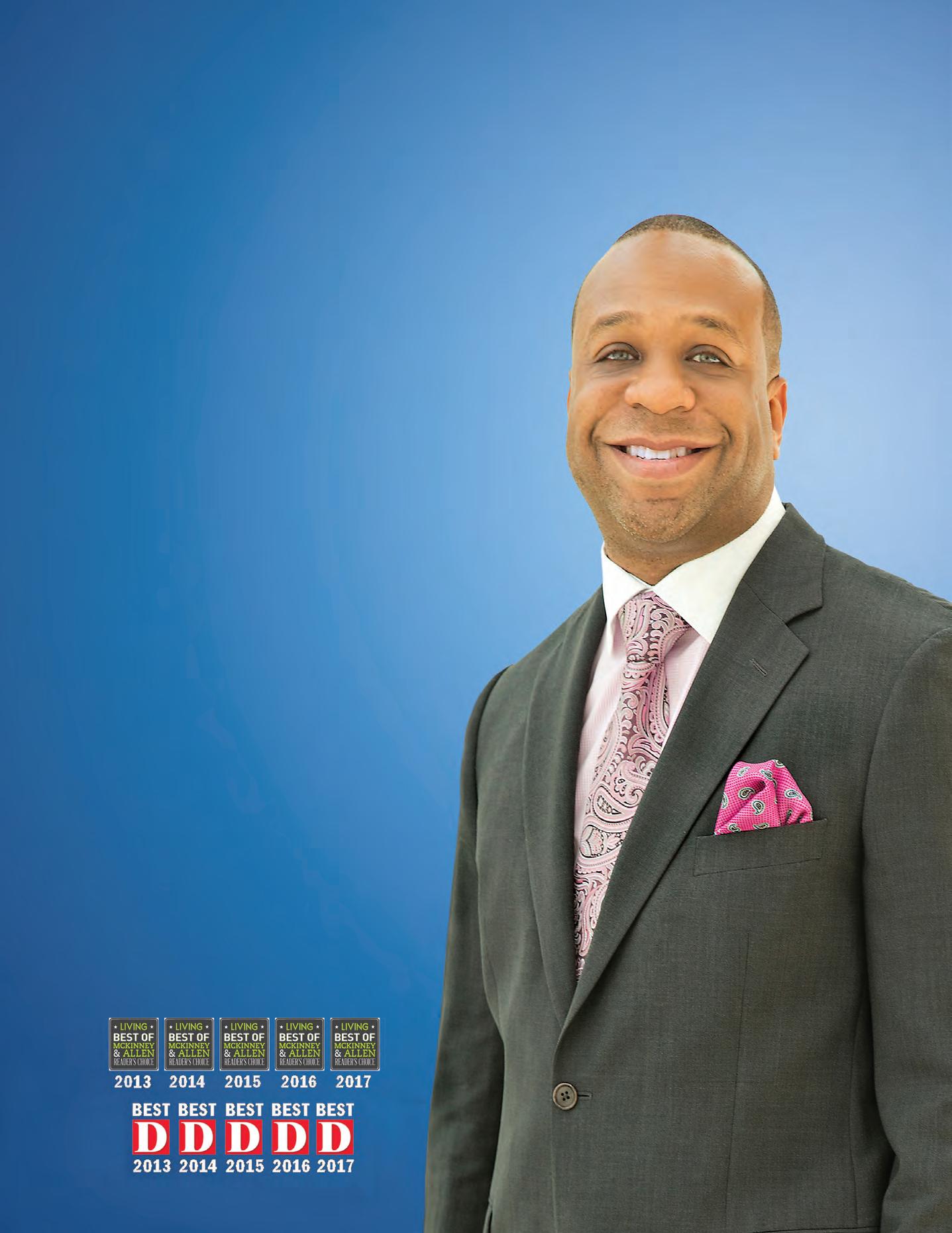
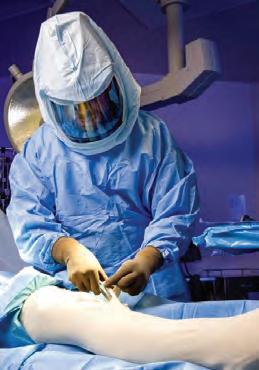


For a heady dose of positivity, we catch up with morning talk show host Kelly Ripa in this issue. The petite dynamo is an energizing blend of morning glory that millions of people rise and shine to.
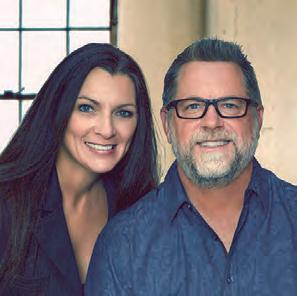
Ripa has been entertaining audiences for two decades on various iterations of the Live! morning program. From Live with Regis & Kelly, to Live with Kelly & Michael, and now Live with Kelly & Ryan, Ripa’s on-air persona is as fun and fresh as the fist day she sidled up to the show’s original host, Regis Philbin.
Find out what makes Ripa sparkle and how she keeps it fresh with her long-time hubby Mark Consuelos on page 8. We’re not surprised how candid Ripa gets when sharing details of her life. After all, being relatable and sharing personal anecdotes are part of her charm.
Switching gears to something more serious, we discuss sleep apnea on page 48. Roughly 20 million people suffer from this ailment and have difficulty breathing while sleeping. Leftuntreated, it can lead to serious health conditions. Read about the causes, effects, and treatments to get the inside track on how to tackle this problem.
For something on the lighter side, turn to page 30 for suggestions on fun hiking adventures to tackle with your kids or grandkids. Far from strenuous, these novel suggestions offer learning opportunities for kids and adults alike.
Here’s hoping you get to it.
Be well!

PRESIDENT & CEO
SAM HOUSTON
VICE PRESIDENT & CFO SPRING HOUSTON
EDITOR, FEATURE WRITER & SOCIAL MEDIA SONDRA BARR
ART DIRECTOR
VANESSA FRYER
ACCOUNTS MANAGER JENNIFER BEAVERS
WEBSITE LYDIA ROGERS
ADVERTISING & SALES
TEXAS: Denton County, Dallas County, Collin County
TEXAS & OKLAHOMA: Texoma Area
WRITE TO US:
Tell us who you would like to see featured on the cover, or what subjects you would like covered in upcoming editions of LIVING WELL MAGAZINE at info@livingwellmag.com
SUBSCRIPTIONS & CUSTOMER INQUIRIES
Houstons of Dallas Publishing, Inc. 102 E. Broadway, #901 Prosper, TX 75078
www.LivingWellmag.com
Phone: (214) 507-1000 Fax: (855) 248-2132
LIVING WELL MAGAZINE is a source for quality educational articles on living a healthy, vibrant life. Our focus is on connecting our readers with the latest information on a host of topics relevant to their evolving life. From cutting edge medical news and procedures to top-tier financial, legal and lifestyle information. Connecting readers to leading medical and business professionals in their community in Texas and Oklahoma.

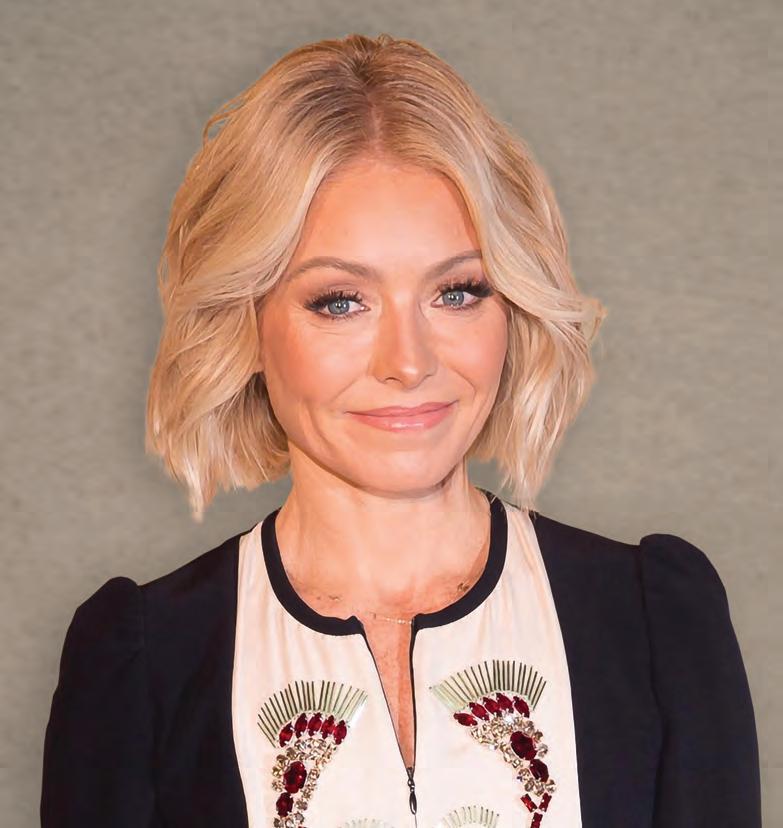



Advanced Heart & Vascular
Advanced Heart & Vascular Care
Your heart is uniquely yours. At Texas Health Physicians Group, your heart and vascular care begins with a plan that’s customized for you. And with locations across North Texas, our care is close by. Schedule an appointment today, either in-person or via virtual visit, and discover our compassionate, comprehensive approach. From proactive prevention and diagnostics to advanced bypass and valve surgery and more, we’ll get you started with a plan for your heart health. And, as always, we have protocols in place designed around your safety. To learn more, go to TexasHealth.org/THPG-Safe.
Your heart is uniquely yours. At Texas Health Physicians Group, your heart and vascular care begins with a plan that’s customized for you. And with locations across North Texas, our care is close by. Schedule an appointment today, either in-person or via virtual visit, and discover our compassionate, comprehensive approach. From proactive prevention and diagnostics to advanced bypass and valve surgery and more, we’ll get you started with a plan for your heart health. And, as always, we have protocols in place designed around your safety. To learn more, go to TexasHealth.org/THPG-Safe.
Find your specialist today. 866-922-1076 | THPG.org/Heart
Find your specialist today. 866-922-1076 | THPG.org/Heart
DFW Wound Care Center is a group of wound care specialists in all of the DFW area. They are fellow trained surgeons, and board certified in wound care and reconstructive surgery. All physicians have also completed an intense residency and fellowship in the area of limb salvage, and foot and ankle surgery. When it comes to wound care and limb salvage, DFW Wound Care Center has the knowledge and experience to successfully treat your condition. As a result, patients from all over the country seek to be treated by DFW Wound Care Center.
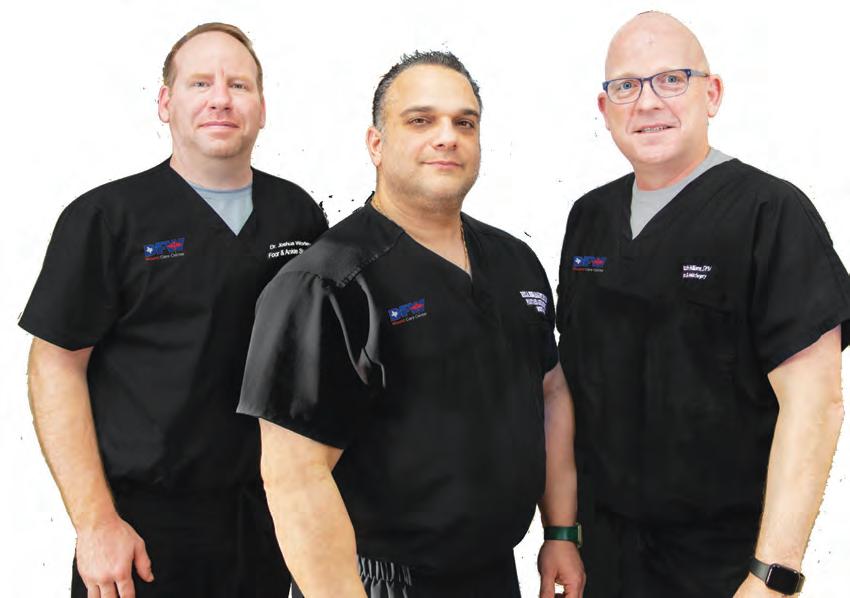
Whether caused by diabetes, infection or disease, any wound that will not heal can be very serious. If you are experiencing a wound or ulcer that will not properly heal, our wound care center can provide a range of expert treatment options best in each case. We offer non-surgical and surgical treatments for:
Diabetic Wounds & Ulcers
Arterial Ulcers
Infected Wounds
Open Wounds
Pressure Ulcers
Vascular Wounds
Acute Wounds
Non-Healing Wounds
Chronic Wounds
Surgical Wounds
Traumatic Wounds
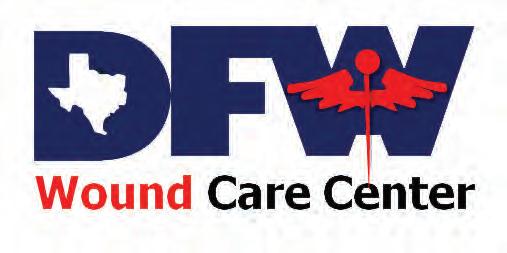
PLANO CLINIC 5804 Coit Road, Ste. 100 Plano, TX 75023
LEWISVILLE CLINIC 502 N. Valley Pkwy., #2 Lewisville, TX 75067
IRVING CLINIC
6161 N. State Hwy. 161, Ste. 320 Irving, TX 75038
DESOTO CLINIC 714 N. Hampton Rd. De Soto, TX 75115

If you think about it, anchoring an award-winning top morning talk show day in and day out for over 20 years must be exhausting. You have to look your best at all times, regardless of late nights and early mornings. Then there’s the constant small talk and off-he-cuffbon mots hosts need to strategically sprinkle throughout each telecast to keep the audience from changing the channel.
To keep up the endless a.m. shtick for two decades without it becoming staid is a skill, one that Kelly Ripa has mastered over the years. That Ripa’s on-air persona on the Live franchise is as fun and fresh as the fist day she sidled up next to the show’s original patriarch, Regis Philbin, is a testament to Ripa’s natural comedic timing and self-depreciating humor.
Only 30 years old when she auditioned for the spot vacated in 2000 by Kathie Lee Gifford, Ripa impressed Philbin instantly. In his autobiography, How I Got This Way, Philbin wrote, “Hers was a natural, quick-witted, unaffected, confident, fun-loving kind of sparkle that both Gelman [Michael Gelman, the show’s executive producer] and I remembered very well.”
What had been Live with Regis & Kathie smoothly transitioned to Regis & Kelly. Ripa, best known for her All My Children role when she was hired as Gifford’s permanent replacement, not only held her own beside the industry stalwart, she invigorated the show. During the Regis years, Ripa and Philbin effortlessly bantered about the minutia of pregnancy, raising kids, and keeping it “hot” in the bedroom.
“

” I FEEL LIKE I HAVE A friendship WITH MY audience.
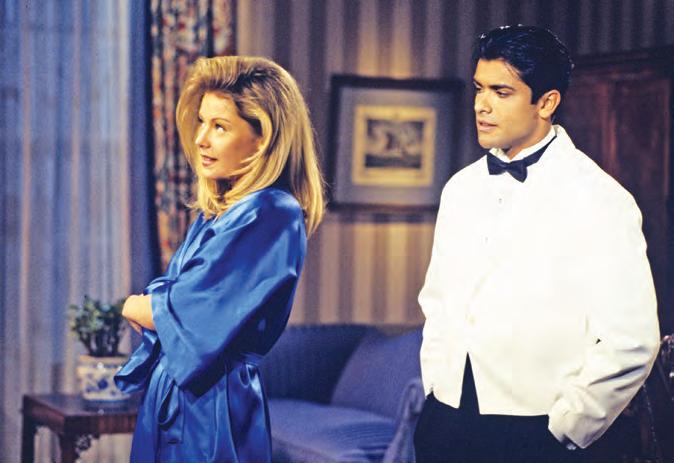

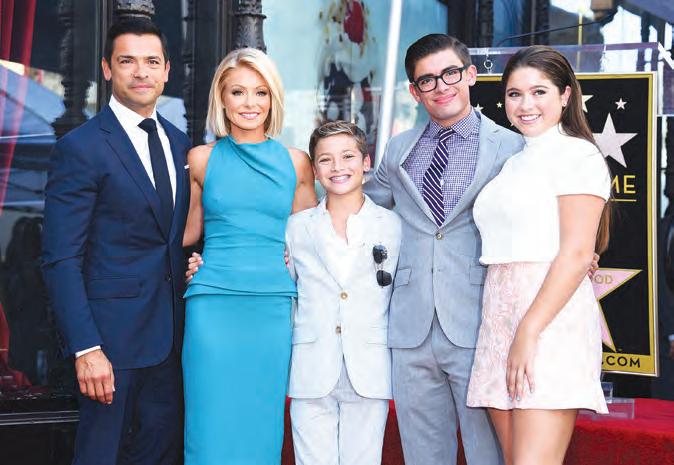
“I feel like I have a friendship with my audience,” Ripa told writer Irina Aleksander two years after Philbin retired at age 80. “Like we know each other, not on a level of talking head and viewers, but like, ‘My kid has the flu. So does yours? Oh my God, yours does too?’”
Ripa recently told Variety that her success connecting with viewers is due to “My overall willingness to let all my foibles unfold and put all of my imperfections out there.”
“A lot of people don’t listen to the people they’re talking to,” said CNN anchor Anderson Cooper. “But Kelly, she picks up on everything, and she makes fun of herself, which, in TV, not a lot of people can do in a genuine way.”
When Philbin stepped away in 2011, Ripa didn’t miss a beat and carried the show. Eventually Philbin was replaced by former football player Michael Strahan and the show was renamed to Live with Kelly & Michael. But, one thing was clear, Ripa was the main draw. Ths continued to be evident even when entertainment powerhouse Ryan Seacrest became Ripa’s permanent co-host after Strahan departed in 2016.
Live with Kelly & Ryan continues to showcase Ripa’s engaging on-screen presence and proved to be a bright light in people’s lives, even during a pandemic. “A lot of people watch our show when they’re in the middle of something,” Ripa told Woman’s Day writer Kelsey Hurwitz in 2020. “So I always approach my job like somebody right now is in an emergency room somewhere and they need something light, they need something happy, they need something joyful…if you can make that person happy or smile or even chuckle for a second, then you’ve done your job.”
ONCE IN A WHILE, I’D tilt the computer AND YOU’D SEE MARK [CONSUELOS, HER HUSBAND]
SLEEPING IN BED. IT WAS A VERY exciting way of doing business.
When Live! did at-home tapings during the height of the pandemic. “People really loved it because they felt it was intimate,” Ripa told Variety. “Once in a while, I’d tilt the computer and you’d see Mark [Consuelos, her husband] sleeping in bed. It was a very exciting way of doing business.”
As for Consuelos, Ripa’s husband, the pair met on the set of All My Children. A year after the two eloped in Las Vegas in 1996, they had a son, Michael. Daughter Lola Grace and son Joaquin Antonio followed.
“I thought she was the coolest, sexiest chick, Consuelos told Aleksander. “She smoked back then, and obviously I don’t think smoking is cool now, but when you’re 24…she was a really, really, sexy smoker.”
Never shy about her love for Consuelos, Ripa frequently takes to Instagram to share shirtless photos of her husband and she isn’t shy about talking about their sex life. When asked how often she and her husband get it on by pal Andy Cohen on his late-night show Watch What Happens Live, Ripa admitted they have “lots of sex.”
“I fundamentally believe that the more you do it, the more you do it, the less you do it, the less you do it,” she explained. “We just like each other a lot. I love my husband. I think he’s awesome. We’ve been together a really long time. We try to do spicy things together all the time.”
The 50-year-old Ripa has even gotten on the sexy selfiewagon, divulging an instance when she sent Consuelos a sexy photo. “I sent him a cute, adorable butt selfiein my underpants. It’s the only
time I’ve ever sent a semi-nude anything, ever!” Turns out, she accidentally sent it to her family members who responded to her via an email saying, “Dear Kelly, we are so proud of all your hard work. Your exercise classes are really paying off.”
There she goes, being relatable again and sharing personal anecdotes.
Of course, the topic of her preternaturally toned body and ageless visage is one she’s quick to point out is hard earned. Since 2015, Ripa has followed an alkaline diet that focuses on eating foods that are low in acid. “I believe inflammation is one of the great killers of people, in different ways. Whether it’s digestive problems, or heart health, or brain inflammation. Inflammation really affects your body in totality, so I try to maintain a really alkaline diet,” she told Women’s Health
In addition to daily workouts, SoulCycle classes, and sweat sessions with her personal trainer, Ripa also takes anti-inflammatory supplements, including omega-3 fish oil, black cumin seed oil, and turmeric. A CBD supplement for better sleep is also one of Ripa’s go-tos. “I’ve read about CBD, but I never really dialed into it, I thought it was nonsense, and it really does aide in helping you sleep,” she told People. I can attest, because sleep was so elusive for me for so many years, partly because I work out a lot, so I have a lot of energy, and partly because I’m a morning show host.”
If the past 20-plus years are any indication, Ripa will be a morning show host for the next two decades.
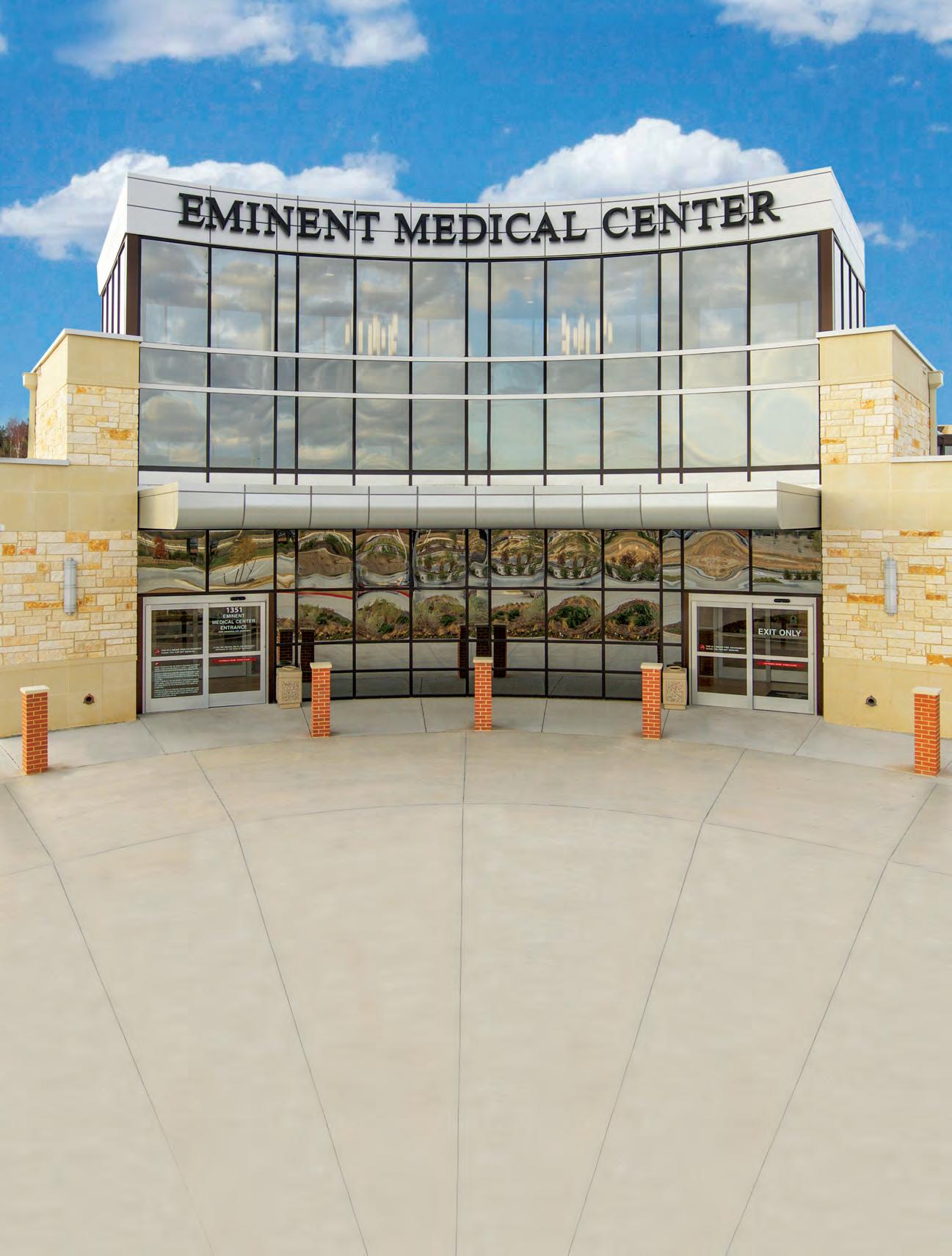

Pain Management • Sports Medicine • General Surgery
Spine Surgery • Orthopedic Surgery • Neurosurgery
Minimally Invasive Spine Surgery • Total Joint Surgery
Foot & Ankle Surgery • Hand Surgery
Gynecological Surgery • Plastic Surgery
Orthopedic surgeons and the medical staff at Eminent Medical Center are excited to offer Zimmer Biomet’s ROSA Knee System, which helps surgeons personalize surgical procedures for their patients.
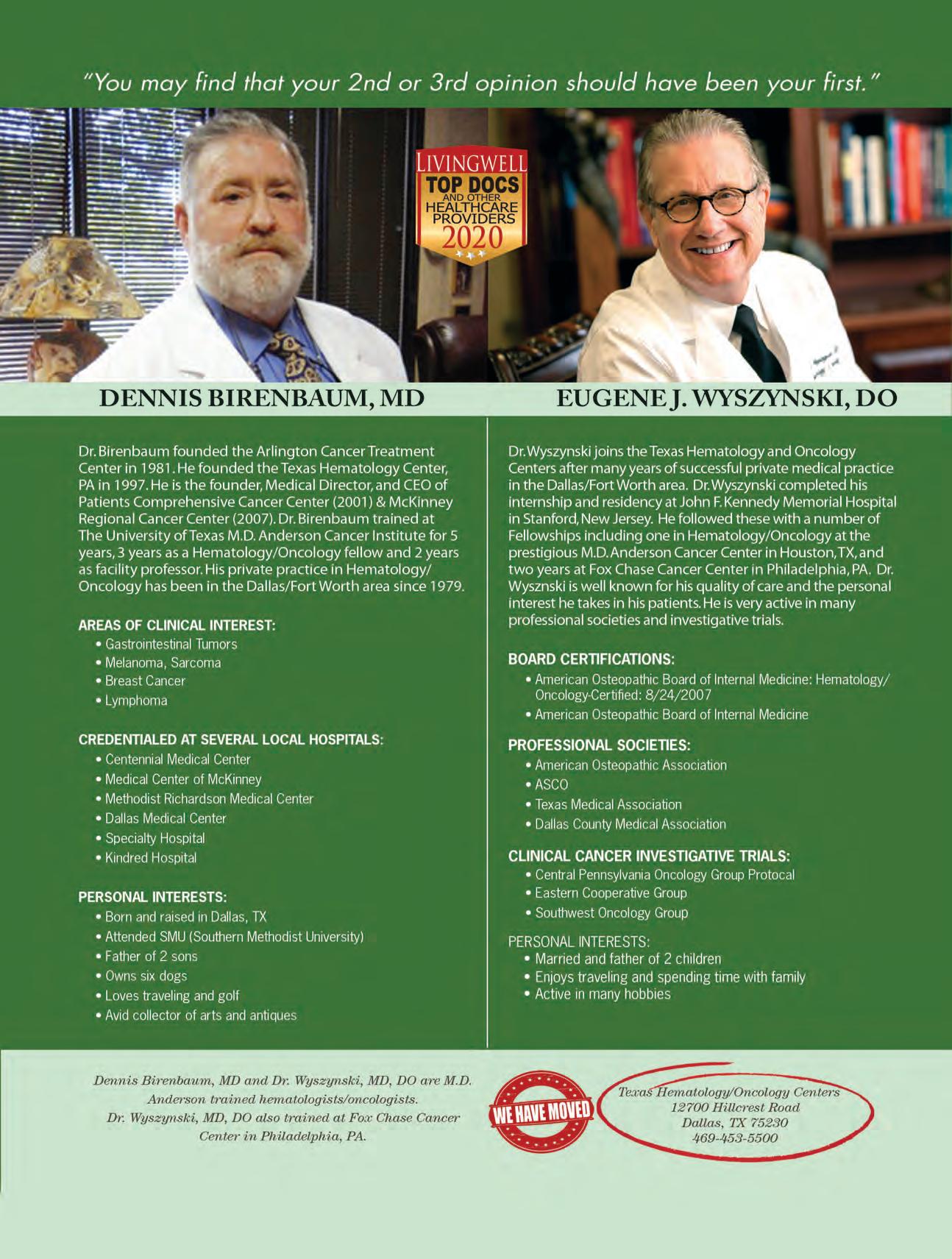
Recognized by U.S. News and World Report as Best Nursing Home and Short-Term Rehabilitation Facility.
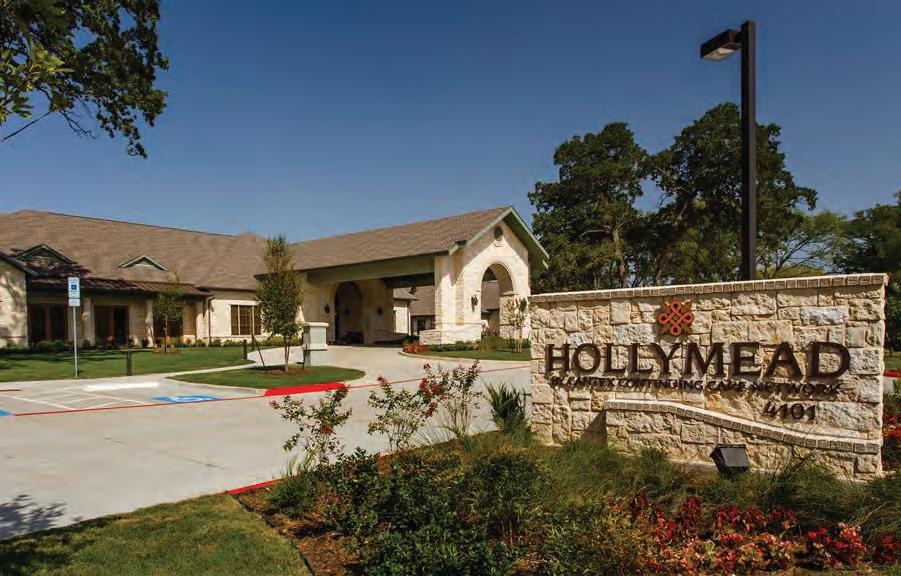

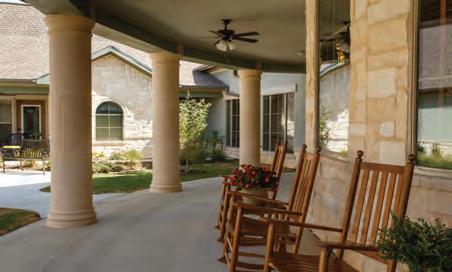
• Private and semi-private studios, some with kitchen elements and/or Frenchdoor courtyard patios
• Flat-Screen televisions
• 32 channels of satellite television service
• Wi-Fi internet access
• Electric beds for easy comfort adjustments
• Living room with fireplace and player piano
• Library with computer stations and complimentary internet access
• Chapel
• Neighborhood cafes with complimentary premium beverages and snacks
• Restaurant-Style dining room
• Beauty/barber shop with full-time beautician
• Activity program with community outings
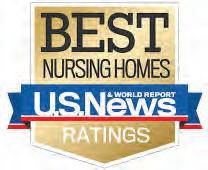
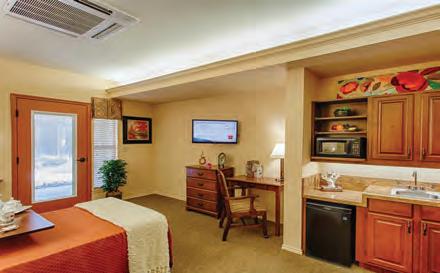
• Around-the-clock skilled nursing
• Physical, Occupational, and Speech Therapies
• Wound Management
• Intravenous Therapy
• Tracheotomy Care
• Physician Services
• Laboratory Services Amenities:
• Sedan and van for resident transportation
• Medication Administration
• Enteral/Parenteral Therapy
• X-Ray Services



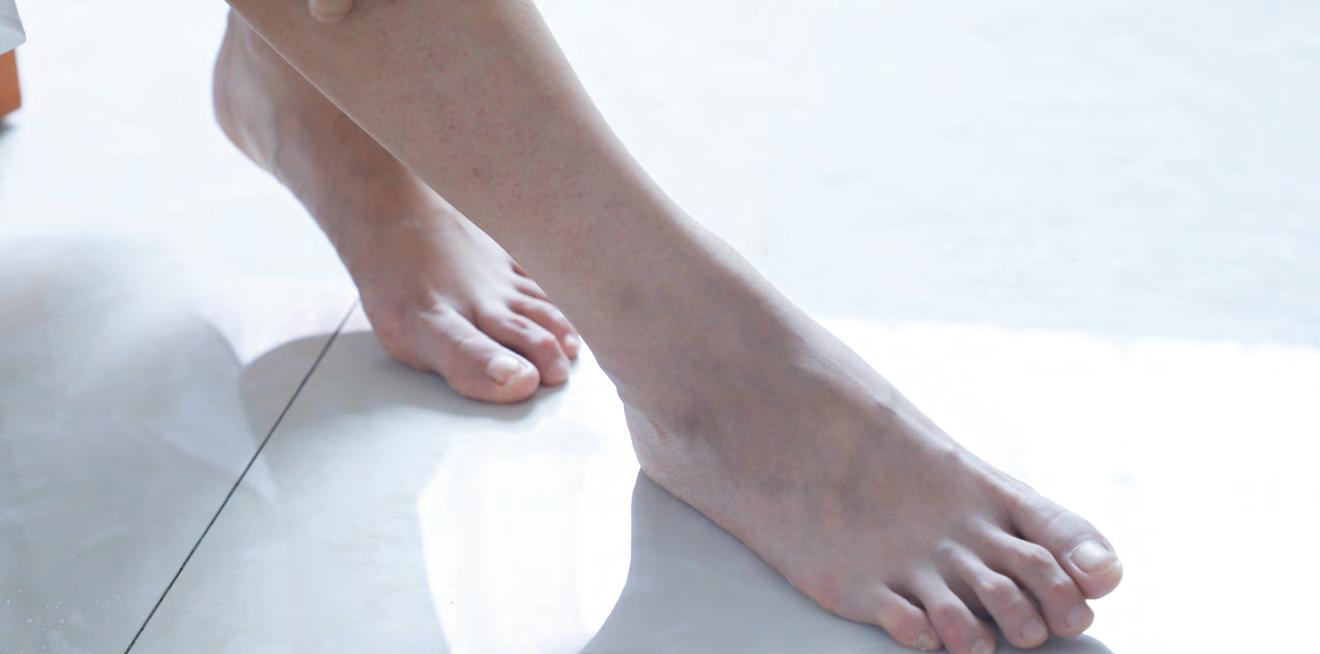
feet and ankles
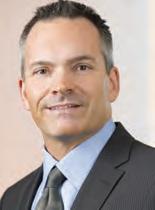
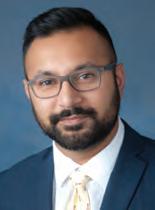
DPM, FACFAS, FAENS, FACCWS, CWS-P
American Board of Foot and Ankle Surgeons, and in Wound Management by the American Board of Wound Management, Dr. Dauphinée is esteemed as a trusted expert within the medical community. He lectures nationally and internationally, trains surgeons to treat a variety of peripheral nerve pathologies, and serves as faculty for multiple surgical workshops.
He has been the recipient of numerous fellowships and awards, which have gained him respect from his peers and have provided unique opportunities to further study and successfully perform innovative procedures. He is the author of Saving Limbs Saving Lives: Advanced Treatments to Prevent Amputations in Diabetic Populations.
Dr Hussain ascribes to the simple philosophy that each patient is unique and deserving of individualized, attentive, and personable care.
Dr. Hussain received his formal education and training from some of the nation’s most distinguished podiatric surgeons, and is a contributing author to clinical research and medical textbook publications Highly knowledgeable and skilled in advanced treatment options, he demonstrates exemplary expertise both in podiatric medicine and in his exceptional and compassionate care for patients.
* Certified - Board Foot Surgery, Reconstructive Rearfoot/Ankle Surgery
† Board - Wound Management

Afriend recently confidd in me that she was concerned about her mother’s driving. Julie noticed a dent on the back bumper and realized that her mother had stopped driving at night. She was uncomfortable talking with her mother about this because it seemed like such a role reversal. After we discussed some strategies, Julie fially approached her mother with her concerns. With an eye exam, and a new pair of glasses, Julie’s mother is now driving safely once again. She told me that the best part about this situation is that now she’s had one challenging conversation with her mother, she feels a lot more comfortable talking with her about other issues.
It is natural to feel a little uncomfortable talking with a spouse, parent or other loved one about personal issues such as money management, memory lapses, health, personal safety and end of life decisions. If approached properly, however, these conversations can lead to deeper, more fulfilling relationships.
Seize the Moment
Take advantage of stories in the news or experiences of friends and neighbors to start
conversations about touchy subjects. If your father’s neighbor is recovering in a skilled nursing facility after a fall, go with dad to visit and talk about his preferences should he need physical therapy. If you see a news article about scams targeting seniors, print it out and share it with him.
The most successful conversations take place in an atmosphere of love and respect. Start the conversation at their home or somewhere they feel comfortable. Keep the conversation casual by chatting while making dinner or driving in the car. You may remark, “Mom, I don’t know how you keep track of all these medications. I would need to create a spread sheet on the computer to keep it all straight!” Using humor can often diffuse a tense situation.
If your mother loses her keys one time, you cannot assume that she has Alzheimer’s disease. Observe the situation over time, making note of specificconcerns. When you speak with your loved one you may say something like “When I brought in your mail I noticed
PHOTO BY ANNA SHVETS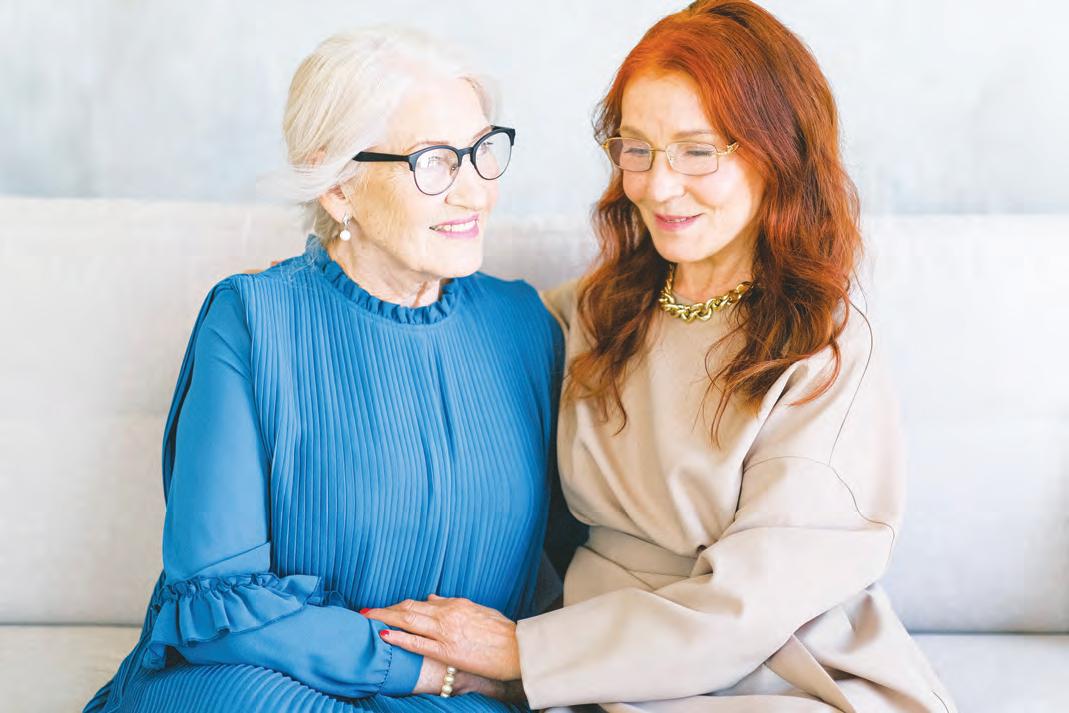
one of your bills said Final Notice, and you have a utility bill on your desk with a late fee. What can I do to help?” Her response will help you determine whether she is having memory problems, fiancial problems, or if she just ran out of stamps.
It is best to have some solutions in mind before you begin a conversation. If you father has been falling a lot you may say, “Dad, I’m worried that your next fall may be more serious, so I’ve been looking into ways to help you stay independent. If the time comes when you need more help, would you prefer to hire someone to come into your home, would you want to move to an apartment where there is help available on-site or do you have another plan?”
It’s never too early to start planning for the future. Often, it is easier to begin these conversations before there is a crisis. Your parent or loved one may be hesitant to discuss the situation right away, but by bringing it up, you open the door to future conversations. It’s also important to think about how you would want these issues to be handled for yourself. You may begin by saying “Mom, I’ve been concerned about what might happen to me if I could no longer make healthcare decisions for myself, so I’m going to designate a Power of Attorney and I’m filling out a Living Will. Why don’t you work on one too?”
•
•
•
•
•
•


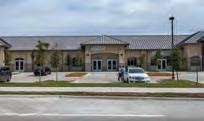
Dain B. Brooks, M.D. is a board-certified ophthalmologist, demonstrating that he has met the rigorous standards established by the American Board of Ophthalmology. You can trust him with every aspect of your eye care, from cataract surgery and premium lens implants, refractive surgery (including LASIK, PRK and ICL) to longterm eye disease management and dry eye treatment.
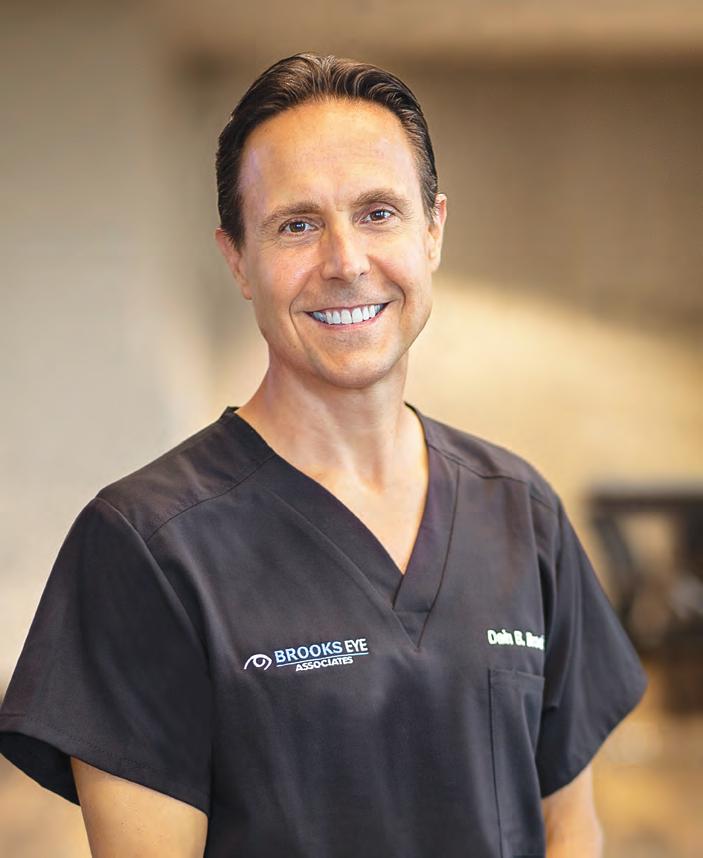
After graduating with honors (Alpha Omega Alpha) from the George Washington University School of Medicine in 2002, Dr. Brooks went on to complete his ophthalmology training at Walter Reed Army Medical Center. During his training and at subsequent Army medical centers, he had the honor of treating eye injuries suffered by soldiers in the Iraq and Afghanistan wars.
Dr. Brooks was selected as Faculty Member of the Year in 2009 by the San Antonio Military Ophthalmology Residency Program. In addition to his numerous awards and recognitions, Dr. Brooks’ work has been published in several national and international clinical journals.
As part of his commitment to staying on top of the latest developments in ophthalmology, Dr. Brooks is a member of the following professional organizations: American Society of Cataract and Refractive Surgeons, American Academy of Ophthalmology and Texas Ophthalmological Association.
Dr. Brooks is married with four children and enjoys traveling with his family, biking, tennis, and community service in his spare time. He also frequently participates in international cataract surgery medical missions and is fluent in Spanish. Whenever possible, Dr. Brooks enjoys participating in cataract surgery medical
missions to meet the needs of people without direct access to advanced eye care in other countries. He teams with several Faith-Based and humanitarian organizations to provide care in an effort to preserve and restore sight for individuals in underserved nations and communities at home and abroad.
Dr. Brooks is truly honored to provide his surgical skills on these mission trips and looks forward to future opportunities to provide needed services to those in need throughout the world. His missions have included trips to Honduras, Ecuador, Guatemala, Mexico, India and The Cornerstone Assistance Network providing care to underprivileged patients throughout North Texas.
Dr. Brooks has been in private practice in North Dallas and Plano since 2010. He has made it his mission to provide patients at Brooks Eye Associates with a premium experience delivering the highest quality medical and surgical eye care.
Brooks Eye Associates utilizes the latest in technology and techniques from the initial exam all the way to the patient surgical experience in their own onsite two-room ambulatory surgery center. They focus on treatment and prevention.
“We know that monitoring your eye health through comprehensive exams is the best way to ensure your vision

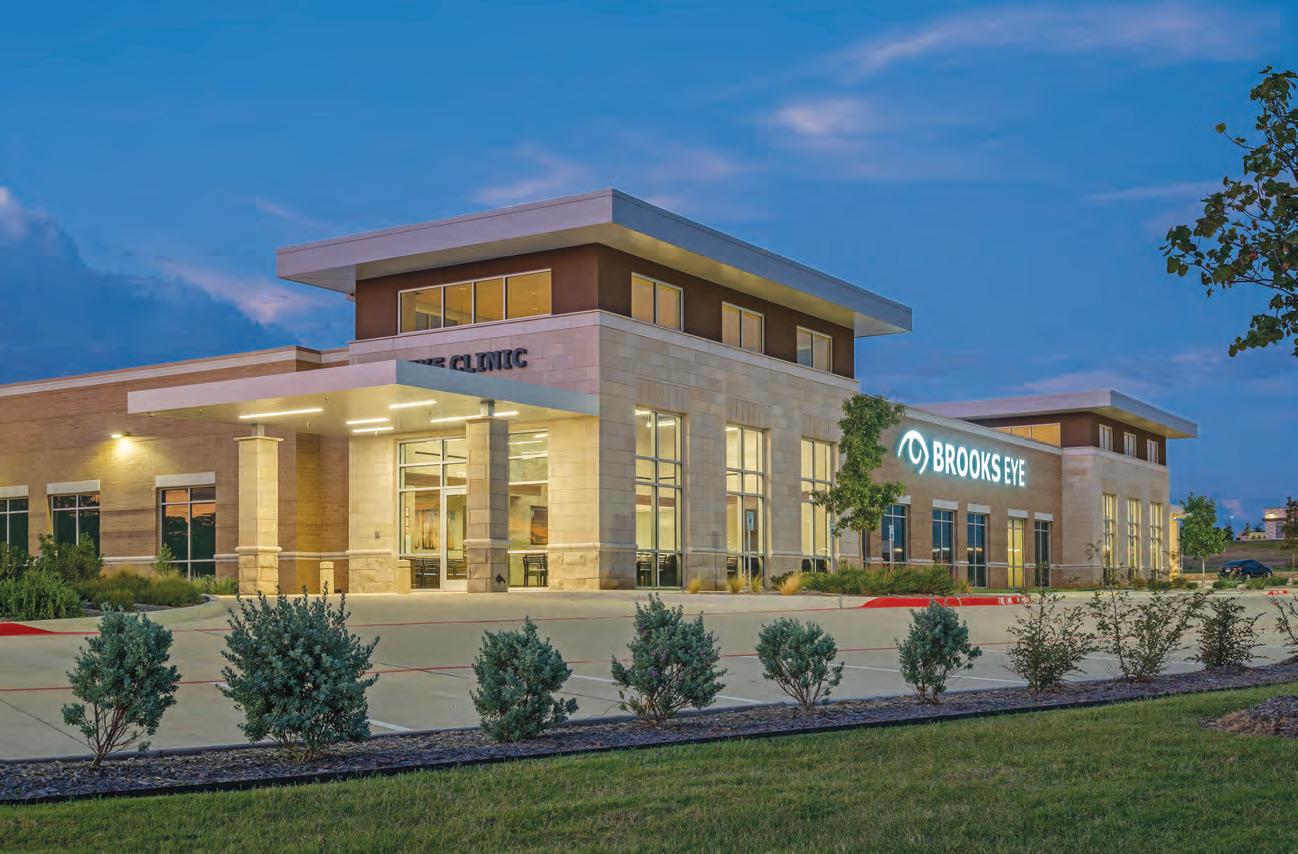
is protected well into the future. If you are suffering from an eye disease, our caring staff optometrists will carefully diagnose your condition to determine the best approach for treatment. If you have a refractive disorder, we can provide an effective solution to restore your vision,” says Dr. Brooks. At Brooks Eye Associates we strive to make patients’ visits as comfortable as possible, welcoming each individual into a caring, secure and attentive environment. Brooks Eye Associates works collaboratively with a network of caring and dedicated clinicians with the central goal of providing the quality and compassionate eye care that our patients deserve. We strive to consistently improve our ability to serve our patients and surpass each of their expectations. Within the past four years patients have made it known they feel Brooks Eye Associates has accomplished this mission by nominating Dr. Brooks as best
Ophthalmologist in the area in many patient poll platforms. Having the experience, skill, and technology necessary to provide exceptional eye care is one thing. Giving patients the individualized attention they deserve is another. The entire medical care team at Brooks Eye Associates is committed to providing you with the best patient experience and vision outcome possible. During each visit, you can rest assured that we will spend quality time with you to make sure all of your questions and concerns are addressed so that you fully understand the next step in your vision care process. If you live in Plano, Frisco, or the Dallas area and are looking for an experienced ophthalmologist and medical care team you can trust, please contact Brooks Eye Associates today at (214) 758-7941 to schedule an appointment. We look forward to meeting you and working with you to restore your vision!


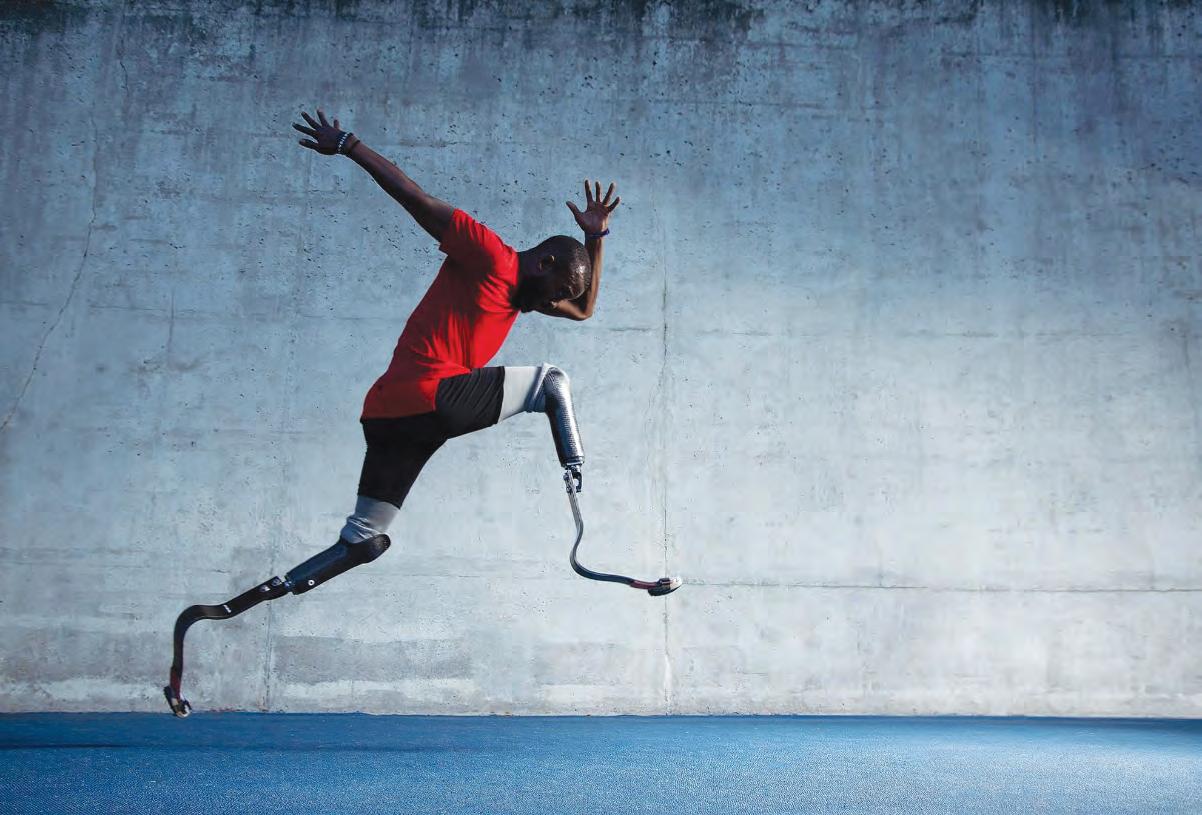
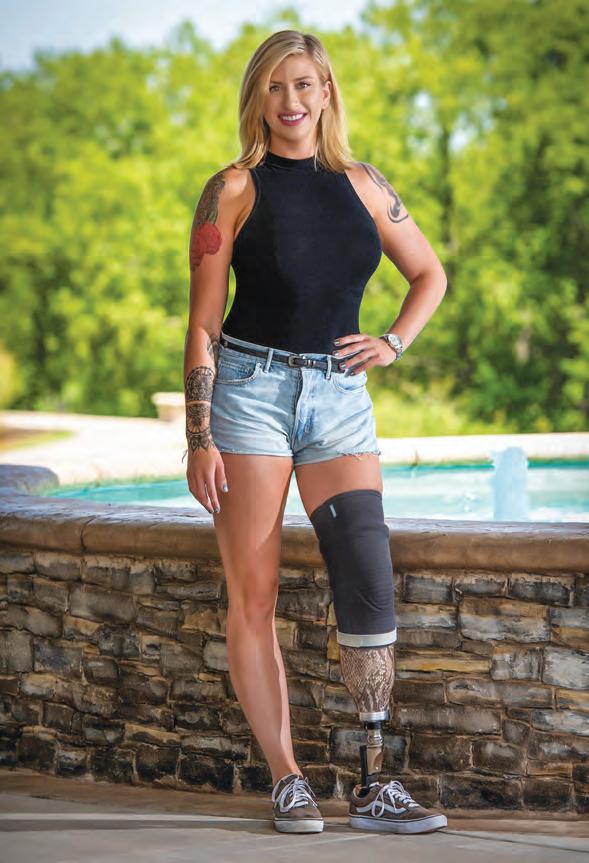
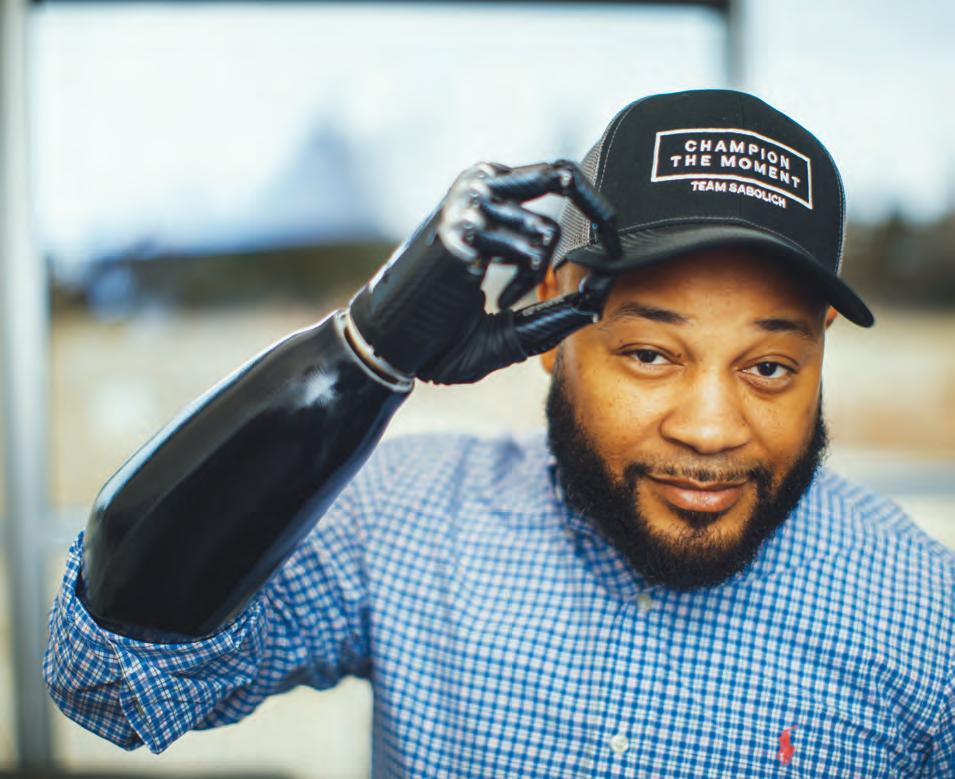


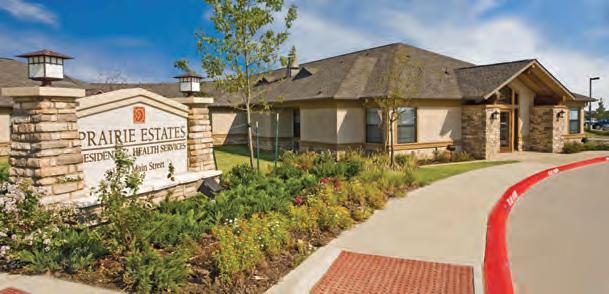
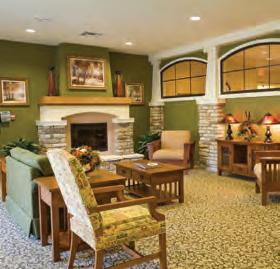
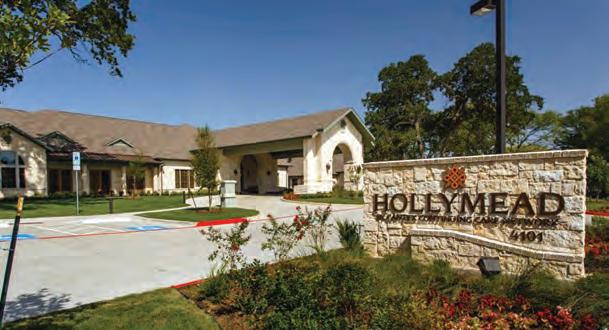

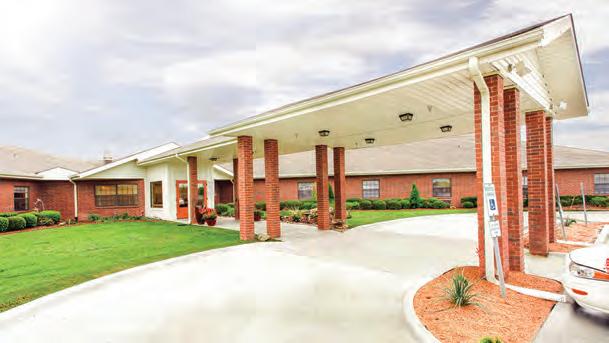
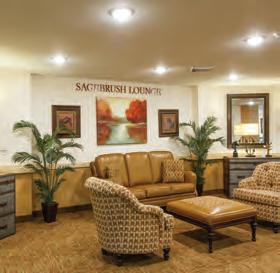

It’s estimated that 5 million Americans have Congestive Heart Failure (CHF), a chronic and often undiagnosed medical condition in which the heart becomes weak and unable to pump blood effectively throughout the body. Although the words “heart failure” sounds alarming, it does not mean your heart has stopped beating or is about to. It means your heart is unable to pump blood the way it should, to deliver oxygen-rich blood to your body or remove waste from it. By not being able to effectively remove waste from the body, fluids build up in the lungs and other body tissues (including the abdomen, feet, ankles and legs). CHF is often chronic, which means it can be managed and treated, but not cured. Day-to-day activities such as walking, climbing a fliht of stairs or grocery shopping can be difficult because you can, among other things, get short of breath and feel tired.
There are several different causes of CHF. Some risk factors are high blood pressure, coronary artery disease, irregular heartbeat, heart valve disease, congenital heart defects (defects you are born with), heart muscle disorder, previous heart attack(s), diabetes, alcohol and drug abuse.
A patient may go years without visible symptoms of CHF, and the symptoms typically worsen as you age. As the heart weakens, it pumps less blood. CHF develops slowly as you age because the heart itself tries to counteract its weakness by enlarging itself and pumping faster, attempting to keep the same amount of blood moving through the heart. However, this is only temporary. The heart eventually tires and cannot pump enough blood to meet the body’s requirement. Some symptoms of CHF include shortness of breath, feeling weak and/or tired, fatigue, swelling of the ankles, feet or legs, dizzy spells that can lead to decreased attention span and memory loss, frequent urination at night, an irregular or fast pulse, and weight gain from excessive fluid.
To see why your heart has weakened, a physician will perform an examination, ask questions and possibly do some tests. The physician is looking for signs and symptoms of CHF as well as any underlying condition that may have caused your heart to weaken. The physician
will use a stethoscope to listen for an irregular or quick heartbeat, and will listen to your chest for sounds of fluid around your lungs or the distinct sounds of a faulty heart valve. Your physician may order a chest x-ray to see if your heart is enlarged and detect any fluid around the lungs. An EKG (electrocardiogram) can be used to check for irregular heartbeats or prior heart attack. Echocardiography (sonography of the heart) can see the structure and movement of your heart. Other tests such as stress tests, holter monitor, nuclear scans and cardiac cath can be used as well.
Your physician uses the information learned to develop a treatment plan. The treatment for CHF depends on the cause and severity of your condition. It’s best treated when the cause of your CHF is identifid. The treatment plan is designed to relieve some of your symptoms and may include medications to help your heart work better, rest periods during the day, dietary changes to reduce the amount of sodium you ingest, physical activity as prescribed by your doctor, lifestyle changes such as limiting how much alcohol you drink, quitting smoking, controlling your high blood pressure, diabetes and cholesterol levels, and weighing yourself daily to watch for fluid buildup.
According to Centers for Disease Control and Prevention, one person dies every 36 seconds in the U.S. from cardiovascular disease. About 655,000 Americans die from heart disease each year—that’s 1 in every 4 deaths. Ths is because people are living longer. As baby boomers age, CHF rates will increase. CHF is the number one cause for hospital admission in the United States for people age 65 and older. The best treatment for CHF is prevention but it’s equally important for those who suffer from CHF to know they have options. People with CHF can lead happy, productive lives. It’s important for those suffering with CHF to include their families and friends, build a support network, make the lifestyle and dietary changes they need to, and frankly become active participants with their physicians in the management of their health. If you’re suffering from some of the signs and symptoms of CHF and have not been to a doctor recently, please call your primary care physician and set up an appointment.
According to Centers for Disease Control and Prevention, one person dies every 36 seconds in the U.S. from cardiovascular disease. About 655,000 Americans die from heart disease each year—that’s 1 in every 4 deaths.
The PODdoctors are Dr. Damien Dauphinée, double board certified in reconstructive foot and ankle surgery and wound management, and his partner Dr. Raafae Hussain, fellowship trained podiatric surgeon. Each week The PODdoctors will discuss aspects of podiatric medicine and surgery to educate listeners on common foot and ankle problems and the latest treatment options available.
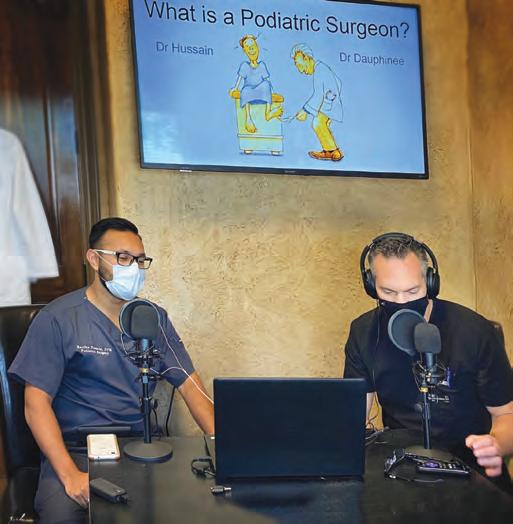
Podcast listeners can gain rare insights into the mind of a podiatric surgeon, as Doctors Dauphinée and Hussain discuss topics such as:
• Typical issues presented at patient office visits.
• Causes, prevention methods, and treatment options of common foot and ankle issues such as bunions, heel pain, diabetic foot problems, and ankle sprains.
• Common treatments to decelerate the progression of symptoms or issues.
• Different types of treatments, surgeries, and recovery periods.
• Determining when surgery is needed.
We are really having fun with the podcast discussing foot and ankle surgery and mixing in interviews with colleagues in other specialties that can provide additional perspective on our patient population. Our secondary focus is to educate folks about the medical mission project we are involved in through the Texas Podiatric Medical Foundation which provides care to indigent patients. We started a Go Fund Me campaign for the Foundation through the podcast website and encourage our listeners to donate.
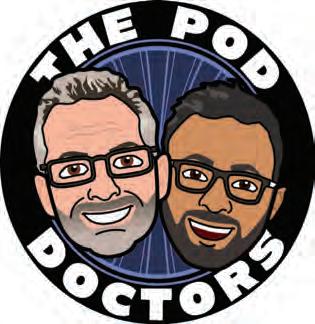
Dr. Damien Dauphinée and Dr. Raafae Hussain co-own and operate Complete Foot and Ankle Care of North Texas, a podiatric practice in Denton, TX. Their podcast, “The PODdoctors” is available on most streaming platforms, including iTunes, Spotify, Google, Amazon




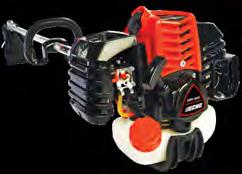


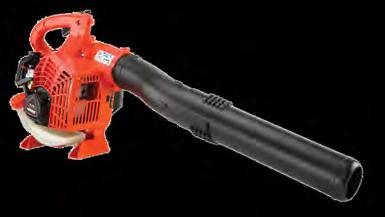
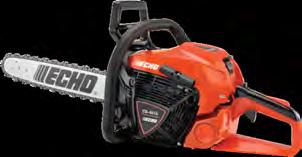


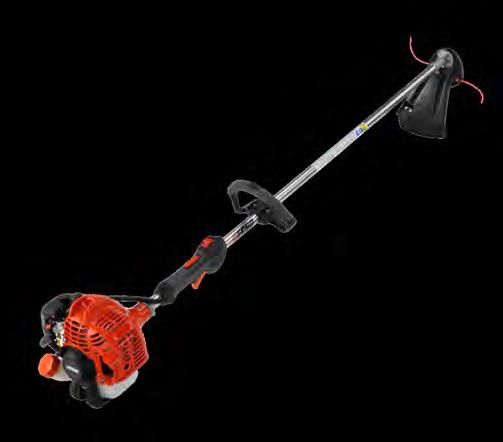







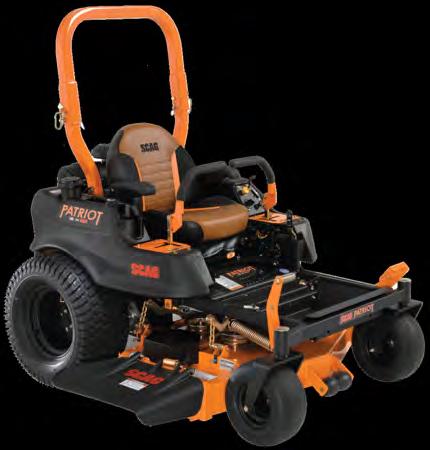





e have all heard the saying, “It’s better to give than to receive.” Giving with a generous heart often warms the soul of the grantor far beyond the recipient. I cannot begin to imagine how difficult the thought process is for family members who have lost a loved one, and within minutes, are asked to make a quick decision on organ/tissue donation. “Giving the giftof life” sounds like an easy decision until it involves one of your own. I have not been in the situation of deciding on donation, but my brother was the recipient of a transplanted lung and I can speak fisthand of the joy felt by a family whose loved one gets that second chance at life. Although we were so happy his long wait was over, our hearts ached for the family who had lost someone close to them. Their sadness was just beginning and it is important to realize they need a great deal of care and attention. In no way would I try to encourage someone to be a donor, nor would I discourage someone who is considering it. It is very important to realize, however, what is being agreed upon and how those decisions will impact other wishes you may have. Typically, donating corneas and certain tissue will have minimal impact, if any, on the ability to have viewing of a person’s body. Larger organ donation, such as heart, lungs and kidneys also do little to impact one’s ability to view the body, although this does create a more difficult embalming process. You may encounter extra cost related to such from the funeral home
Occasionally, a person chooses to donate their whole body to a school or research facility. While the receiving institution will file the required paperwork with the state on behalf of the family, they do nothing to help a family create a meaningful and appropriate tribute, nor do they help a family fid ways to say “good-bye.” Ths is where family members can get stuck in the middle. There are numerous details that must be addressed, decisions made, and items tended to of which a funeral director is uniquely qualifid to help. Families have come to realize this, oftentimes in the 11th hour, when they want register books, service folders, a flag, an honor guard, flwers, and a reception following their memorial service at their church. Unfortunately, no plan to accomplish these things is thought of until the day before the service.
Funeral directors bring “life” to events that are necessary as a result of a death. While this may sound strange, funeral directors have the knowledge and experience to not only help a family arrange for things they want, but also suggest things a family might never think of doing that will add much to a memorial service. Funeral directors arrange for, carry out, and coordinate a number of details the general public never knows about. These behind-the-scene duties mostly go unnoticed because things are present where expected, previously arranged to be carried out, and available when needed. On the other hand, a memorial service without proper attention to detail will be lacking organization, direction, and a unique and personal tone.
Funeral homes today must prepare for changing needs from our client families. The traditional, cookie-cutter funeral does not meet the needs of the majority of the people any longer. While religious rites may change slightly, if at all, numerous other aspects surrounding death and the many options people demand are constantly changing. The successful funeral home of today listens to the needs of the consumer. The truly exceptional funeral homes of today anticipate those needs ahead of the consumer and have choices and solutions readily available to help families in a variety of different situations.
When you talk about your fial wishes, if those plans include donation, involve a funeral director in those discussions. If your funeral director does not include service offerings for families who choose donation, fid one who does.

What better way to spend quality time with your kids or grandkids and get in touch with nature than a fresh, invigorating walk in the woods, along a river, or the beach? What’s more, family hikes make for fun learning opportunities for the kids and adults alike.
Go on an excursion to learn about rocks and minerals. Before you go, learn which rocks and minerals are abundant in the area, and have everyone choose several to scout for. Take along a small plastic container with dividers, a descriptive rock and mineral guide, and a magnifying glass for viewing the colors, layers, and details. As you identify stones and minerals, discuss their uses and other neat facts.
Wander through the trees and listen carefully for a variety of bird and animal sounds. Before you go, visit your library for a DVD or audio CD of birds and wild animal calls. Then download an audio recorder on your phone and carry it on your hike to record some of the sounds you hear. Listen to the recording again at home and play a game of detective to determine the source of the sounds you can’t make out. Search the Internet and books to discover the makers of the mystery calls.
Capture nature’s splendor. Hiking trails provide plenty of photo opportunities, and kids will love snapping the shots. Discuss in advance what each person wants to photograph, such as a huge oak tree, a monarch butterfly, deer tracks, or a close-up of a nibbling squirrel. When you get home, print out the best photos, and create a nature scrapbook with them.
These giants of nature are not only intriguing because of their size but also because of their many variations. Borrow some books on trees from your library that describe the unique features of trees and their history. Use clues such as the shape of the leaves, texture of bark, and size of the trunk to identify the kind of tree.
Roam the countryside and teach the kids directional skills such as how to read a map and use a compass or the sun to determine direction. Before setting out, choose a trail system that provides maps, or make up your own. Take a trail that branches offseveral times, allowing for plenty of skill-building opportunities. For even more fun, turn the excursion into a treasure hunt. Hide a small prize just offthe trail under a bush or pile of leaves, mark the location on your map, and let the journey begin.
Take a quiet hike in a wooded area with grassy clearings and see how many animals you meet. Watch for snakes, turtles, and geese if there’s a nearby lake or stream. Also, look for squirrels playing chase or gathering food; birds of prey circling overhead; or grazing rabbits and deer. Discuss the animal’s unique characteristics and how those qualities help or hinder the animal. Talk about what the animals eat, their shelters, and species they are related to. Also, keep eyes peeled for animal tracks to identify and determine how recently they were made.
Scouting for insects is an all-time favorite among kids, and the variety of creepy-crawly creatures in the woods is remarkable. Carry an insect book, clear container, tweezers, and a magnifying glass for close examination of insects’ fascinating features. Bring a journal and track the types of insects you fid. Read about insects’ defense behaviors and characteristics such as colors that indicate danger to predators.
Discover with the children the fantastic diversity of plant life. Before you head out, review some books on plants to spark your interest. On each hiking trip, choose a different trail or area and see what plants grow in certain types of soil, climates, and in each season. As you inspect plants, look for their seeds, and notice the variations. Talk about how seeds travel by blowing in the wind or catching on the fur of animals. Carefully brush away the ground cover and look for seeds that have sprouted their roots that will soon develop into a new plant or tree. Learn how individual plants have evolved to have natural defenses to protect against creatures that would otherwise devour them.
Cedar Ridge Nature Preserve
Texas Buckeye Trail
Trinity Forest Trail
White Rock Lake Park Loop Trail
Eisenhower State Park
Northshore and Knob Hill Trails
Eagle Mountain Park
Lewisville Lake Environmental Learning Area (LLELA)
Erwin Park Trail
Ray Roberts Lake State Park
Arbor Hills Nature Preserve
Chisholm Trail
Heard Natural Science Museum and Wildlife Sanctuary
Oak Point Park and Nature Preserve
Binkley Park and Herman Baker Park Loop
Prairie Loop
Raasch Trail
Shoreline Trail

Plan your activities before you leave so you’ll arrive prepared. For your comfort and convenience, carry a small daypack, extra clothing for cold air along trails, and don’t forget hiking boots. For your protection, bring along hats, sunglasses, sunblock, and insect repellant. Be prepared for emergencies by carrying a small flashlight and batteries, watch, map, bandages, and don’t forget plenty of water and snacks. Finally, make the most of your nature quest by carrying binoculars, a magnifying glass, and a small camera.
When hiking with children, keep these suggestions in mind.
• Allow small legs plenty of time for breaks and making the journey and know your kids’ limitations.
• Be familiar with potential dangers in the area in which you’ll explore and teach your kids trail and animal safety.
• Before you set out, prepare your kids by informing them that there may be rules against taking their nature fids home.
You might be surprised to discover nearby trails that you never knew existed. Check with city, county, and state parks and for trails along rivers or near lakeshores. There are also national forests and parks throughout the United States with extensive trail systems. If you have access to a wooded area near you that isn’t too dense, a trail may not be necessary. When hiking offtrails, use safety precautions to protect against tripping, poison ivy, getting lost, or other hazards. 3 3 3
PEDICURES
Ranging from basic to specialized focus on fungus/dermatitis, calluses, severe dryness and other issues.
WE ALSO OFFER Manicures, diabetic nail trimmings, nail art, locally made organic products, safer alternatives to acrylic nails, and much more.

BOOK A COUPLES CARE PACKAGE
An appointment for two, complete with a featured complimentary service.
MON-THURS 8am-5:30pm FRI 8am-2pm
Extended hours available by appointment only.
FOLLOW US


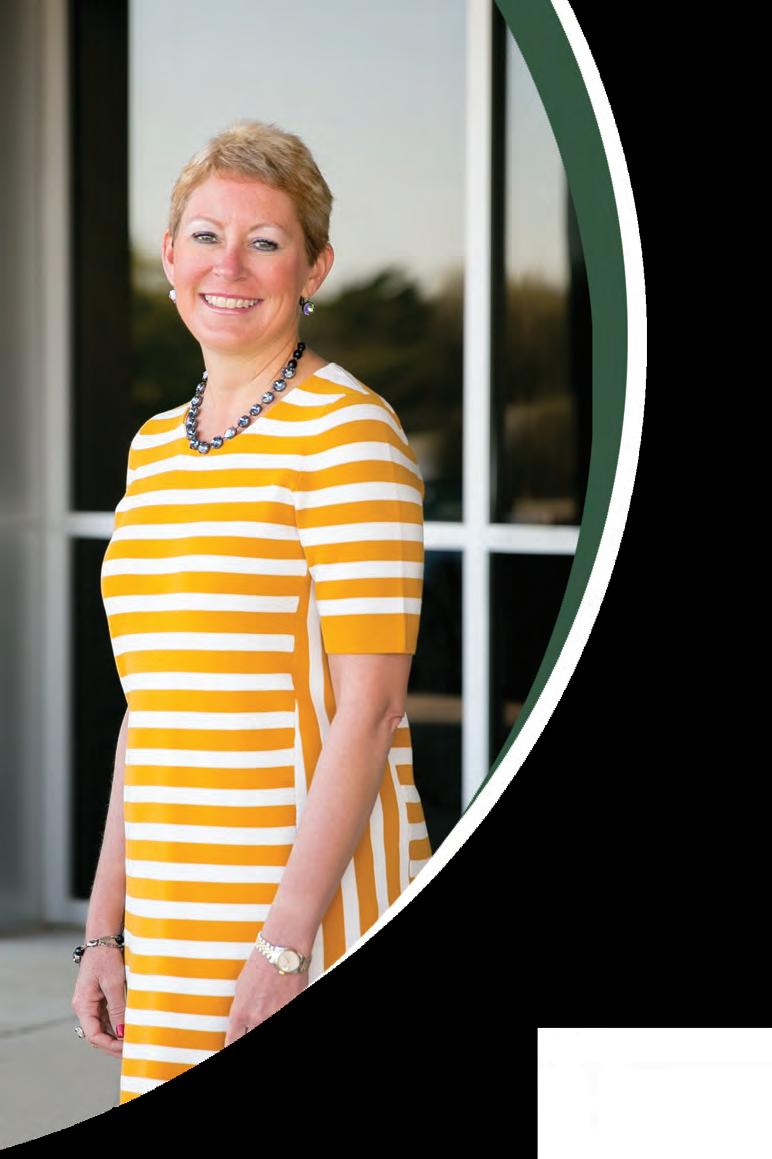
•Sta ed by 2 Licensed, Doctors of Audiology
•Hearing Aid Fittings, Maintenance and Repairs
•Wireless/Connectivity Hearing Solutions
•Invisible Fittings/Open Fittings
•Evaluation Period On All Hearing Aids
•Hearing Evaluations For All Ages
•Battery Purchase Programs
•Custom Ear Protection
•Assistive Devices
•30 Years of Experience
“Hearing Services of Mckinney is my #1 place to go for my hearing loss needs. Caring and dedicated professionals with many years of experience working daily to meet your needs” . –Terry G. Bo x, R etired Collin County Sheri˜
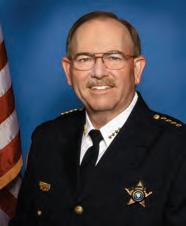

Other times available by appointment
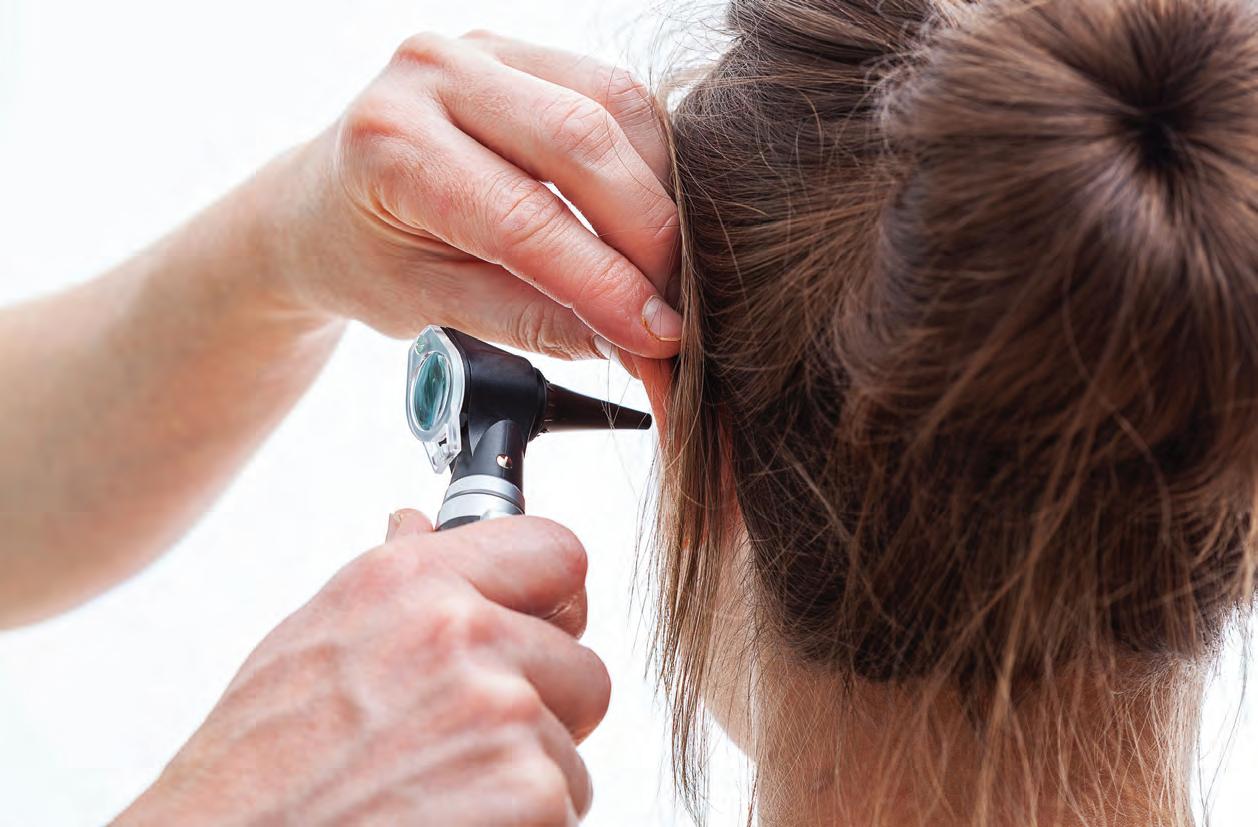
How prevalent is hearing loss in America? You may be surprised! Nearly a fih of all Americans 12 years or older have enough hearing loss to make communication difficult, according to a new study led by Johns Hopkins researchers and published in the Nov. 14 Archives of Internal Medicine. The fidings, thought to be the fist nationally representative estimate of hearing loss, suggest that many more people than previously thought are affected by this condition. The study was led by Frank Lin, M.D., Ph.D., an assistant professor in the Department of Otolaryngology-Head & Neck Surgery at the Johns Hopkins School of Medicine.
Using the World Health Organization’s defintion for hearing loss (not being able to hear sounds of 25 decibels or less in the speech frequencies), the researchers found that overall, about 30 million Americans, or 12.7% of the population, had hearing loss in both ears. That number jumps to about 48 million, or 20.3%, for people who have hearing loss in at least one ear. These numbers far surpass previous estimates of 21 to 29 million.
Hearing loss prevalence nearly doubled with every age decade, with women and blacks being signifiantly less likely to have hearing loss at any age. Lin and his colleagues aren’t sure why these groups appear to be protected. However, he notes that the female hormone estrogen, as well as the melanin pigment in darker skin, could have a protective effect on the inner ear.
In the meantime, Lin says, the new numbers greatly impact the work he and other researchers are doing on hearing loss and its consequences, which, according to previous studies, include cognitive decline, dementia, and poor physical functioning. Lin’s research also looked at a link between hearing loss and the risk of falling in middle aged-adults and the elderly. They found that hearing loss triples the risk!
So, how does someone know that they have hearing loss? There are several signs or symptoms that suggest hearing loss is present. These are things like having trouble hearing over the phone, fiding it difficult to follow conversations especially when there are multiple speakers, needing to turn up the television, having diffiulty hearing in background noise, or saying that others around them are mumbling, etc.
Hearing loss can be caused by so many factors such as the aging process, noise exposure, viral or bacterial infections, head injuries, tumors, certain medications such as some chemotherapy drugs, and heredity, among others. Audiologists are also starting to see a relationship with hearing loss and those who have suffered with COVID-19.
The pandemic and subsequent mask usage is also making many people more aware of their hearing loss. Masks, although necessary to reduce risk of spreading disease, pose challenges for all of us with communication. Ths is especially true for people with hearing loss. Masks remove visual cues that we all rely on for communication. There are clear masks available that are helpful for some. However, in addition to removing visual cues, masks also degrade the speech information, particularly the high pitch sounds which are the consonants of speech. And, different masks have different effects. The N95 masks, which are the most benefical in reducing disease transmission, have the biggest impact on degrading speech information.
“Ths gives us the real scope of the problem for the fist time and shows us how big of a problem hearing loss really is,” Lin says. The moral of the story is that it’s a good idea to have your hearing tested throughout your life. See an audiologist today and stay connected.

Dear Olivia,
My husband and I have received both of our vaccines. When is it safe to visit our grandkids and get back to “normal”?
-I’m vaccinated, now what?
Dear I’m vaccinated, now what, First, thank you for choosing to be vaccinated. This is such an important step in getting our world and community back to some type of normal. The CDC has issued the following recommendations for a non-healthcare setting:
Fully vaccinated people can:
• Visit with other fully vaccinated people indoors without wearing masks or physical distancing
• Visit with unvaccinated people from a single household who are at low risk for severe COVID-19 disease indoors without wearing masks or physical distancing
• Refrain from quarantine and testing following a known exposure if asymptomatic
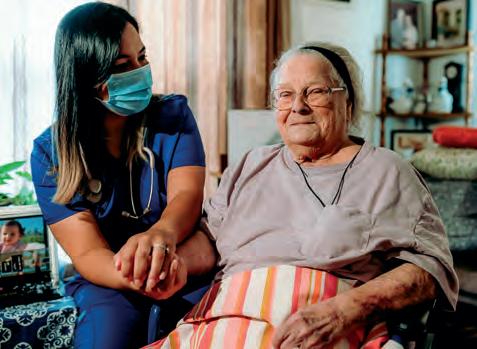
Olivia is a leading voice in health care and senior services and the Chief Nursing Officer of VNA Texas.
For now, fully vaccinated people should continue to:
• Take precautions in public like wearing a wellfitted mask and physical distancing
• Wear masks, practice physical distancing, and adhere to other prevention measures when visiting with unvaccinated people who are at increased risk for severe COVID-19 disease
• Wear masks, maintain physical distance, and practice other prevention measures when visiting with unvaccinated people from multiple households
• Avoid medium- and large-sized in-person gatherings
• Get tested if experiencing COVID-19 symptoms
• Follow guidance issued by individual employers
• Follow CDC and health department travel requirements and recommendations
Also, now that you have had the shot, you can encourage your friends and family to do so and share your experience. Wishing you health and joy as you visit your friends and family again.
~OliviaVNA Hospice Care focuses on living life to its fullest and treating you with the dignity and respect you deserve. As a nonprofit, our bottom line is patient support and care provided by our highly qualified staff.
Following the diagnosis of a life-limiting illness, patients and their loved ones have many questions about the best course of action. VNA Care Choices provides supportive care services in the home while continuing treatment with your current physician.


To schedule your free in-home informational visit please call (214) 535-2615 or email gethelp@vnatexas.org For volunteer opportunities please call (214) 689-2271 or email volunteer@vnatexas.org
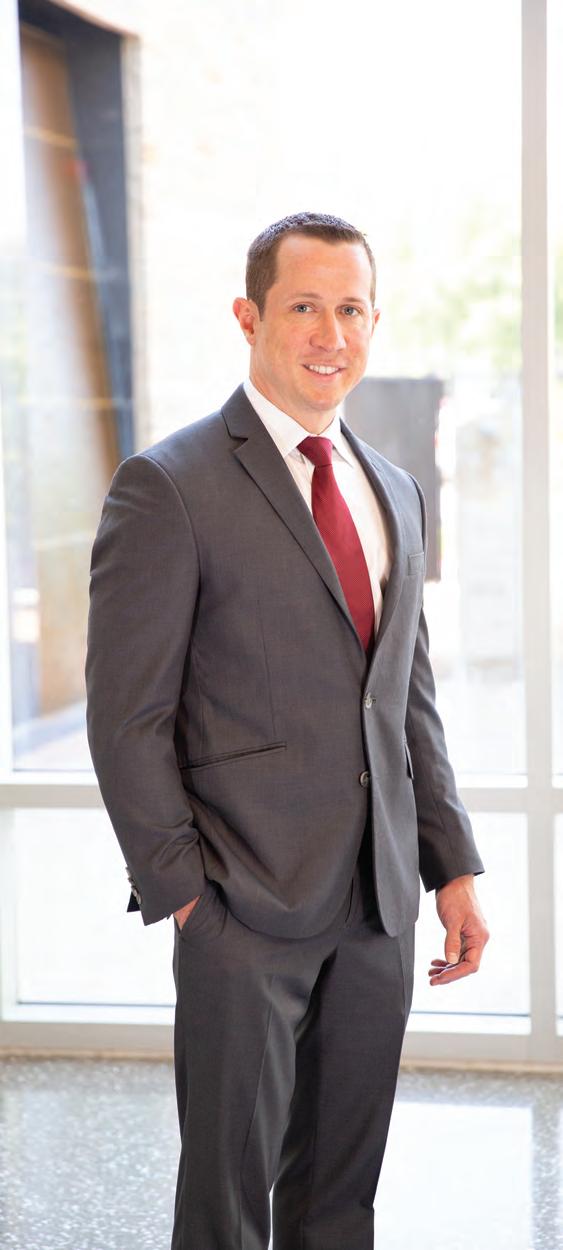
Dr. Chambers is an orthopaedic surgeon at Dallas Orthopaedic Joint Institute who specializes in joint replacement surgery. He received extensive training in joint replacement surgery during his fellowship at Harvard Medical School / Massachusetts General Hospital, which was voted as the top hospital in the United States. Dr. Chambers has implemented the techniques learned at Harvard Medical School into his own practice and offers minimally invasive total hip / knee replacement, partial knee replacement, revision surgery for malfunctioning, loose, and infected joint replacements, arthroscopic surgery of the hip and knee, and revision of failed and recalled metal-on-metal total hip replacement implants. Dr. Chambers focuses special attention on surgical techniques for rapid recovery after total joint replacement which allow his patients a more predictable and earlier return to home and an active lifestyle.
Dr. Chambers is pleased to offer the MAKOplasty Robotic-Arm Assisted partial/total knee and hip replacement. The MAKOplasty procedure is changing the way joint replacement surgeries are performed by providing each patient with a personalized surgical experience based on their specific diagnosis and unique anatomy using a CT-based 3D modeling. The robotic arm technology allows for extremely precise placement of hip/knee components with potentially less soft tissue injury than traditional joint replacement.
Dr. Chambers is a Texas native and grew up in Houston, Texas. He attended medical school at The University of Texas Medical Branch in Galveston, and completed residency at John Peter Smith Hospital in Fort Worth, Texas. He then completed a fellowship in joint replacement surgery at Harvard Medical School. In his free time, Dr. Chambers enjoys traveling with his wife, Christine, and spending time with friends and family. He is an avid sailor and enjoys participating in sailing races on the local lakes in the Dallas/Fort Worth area.
Dr. Chambers practices at Methodist Dallas, Charlton, and Richardson Hospitals. To schedule an appointment please call or text 469-747-0382.
METHODIST DALLAS MEDICAL CENTER
221 W. Colorado Blvd., Pav II, Suite 431 Dallas, Texas 75208
METHODIST CHARLTON MEDICAL CENTER

3430 W. Wheatland Rd., POB 1, Suite 216 Dallas, Texas 75237
469-747-0382
469-405-0135 FAX dallasorthojoint.com

When you need top quality parts and service, look to Plano Power Equipment. To keep your equipment in top shape, you can count on Plano Power Equipment’s retail parts sales and ser vicing of Toro-brand equipment using genuine Toro® parts.
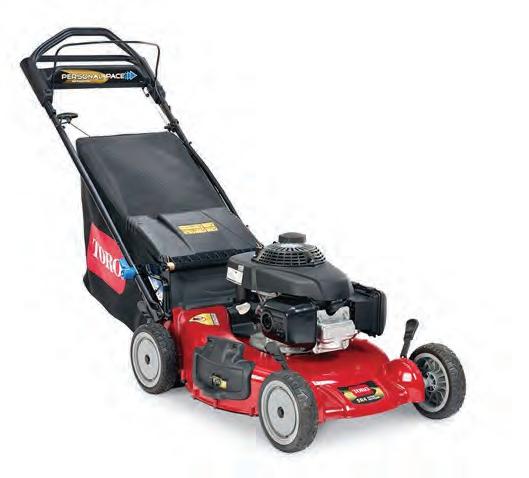
21” Personal Pace® Honda Engine Super Recycler® Mower (20382)
• Personal Pace® self-propel automatically adjusts to your walk speed.
• Powered with a Honda® GCV 160cc OHC engine
• Covered by a 5-Year Guarantee-to-Start engine warranty plus a 5-Year Full Coverage Warranty.
• Quick Stow Storage Handle allows you to store your mower in tight spaces.
30” Personal Pace® TimeMaster® Mower (21199)
• Time Saver – Finish jobs faster with the 30” deck.
• No Restarts! Leave the mower without restarts with Spin-Stop™ Blade Stop Pick Your Pace–You control the mowing speed with Personal Pace®.
• Big Power – You’ll enjoy great power and performance from 10 00 ft.-lb. Gross Torque Briggs & Stratton® 223cc OHV engine.
MOW LIKE THE PROS!
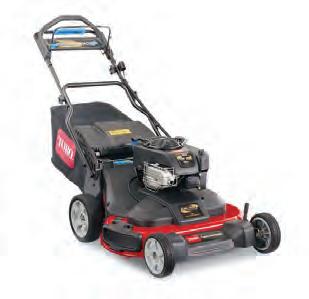
EXPERIENCE THE RESIDENTIAL ZERO-TURN RIDING MOWER WITH COMMERCIAL MOWER FEATURES.
50” TimeCutter® MX5000 (74773)
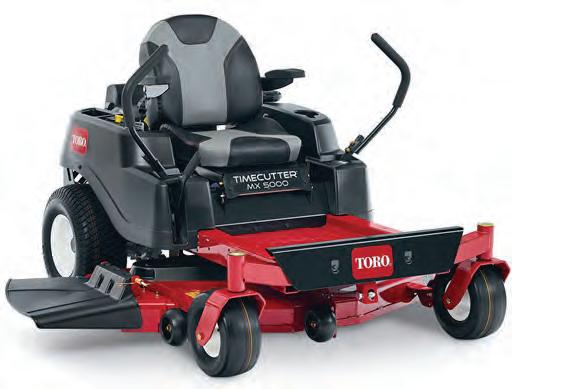
• Mow around obstacles easily with zero-turn radius steering and dependable dual hydrostatus transmissions.
• Enjoy a smoother ride with Toro’s long-lasting durable, heavy-duty 10-guage steel frame, commercial style front axle and heavy-duty front caster forks with wide front tires.
• Pro Performance 24 HP Kohler V-Twin 725cc engine with Pro-Series air cleaner.
• 50” heavy-duty fabricated deck featuring Toro’s tough IronForged™ cutting system that dominates challenging cutting conditions – 3-bladed mowing system and durable 6” commercial inspired spindles, driven by belts made of Kevlar®, the same material found in bullet proof vests.

SCHEDULE

If you have been diagnosed with osteoporosis (low bone density) and have also tried treatments like rest and oral medication for more than a few days and still have sharp back pain, you may have a spinal fracture, also known as a vertebral compression fracture (VCF).
Balloon kyphoplasty (BKP) is a treatment for spinal fractures due to osteoporosis, non-cancerous tumors, and cancer. BKP has been shown in clinical studies to alleviate pain and reduce prescription opioids, compared to patients treated with non-surgical management, such as bracing and bed rest.1-3
While not all treatments have the same benefits for everyone, talk to your doctor about your options and whether BKP may be an option for you.
Although the complication rate for balloon kyphoplasty is low, as with most surgical procedures, serious adverse events, some of which can be fatal, can occur, including heart attack, cardiac arrest (heart stops beating), stroke, and embolism (blood, fat, or cement that migrates to the lungs or heart). Other risks include infection; leakage of bone cement into the muscle and tissue surrounding the spinal cord, and nerve injury that can, in rare instances, cause paralysis; leakage of bone cement into the blood vessels resulting in damage to the blood vessels, lungs, and/or heart.
of
2011;26(7):1627-1637.
non-surgical care for vertebral
3.
fracture (FREE): a randomised controlled trial. Lancet. 2009;373(9668):1016-1024.
. 2013;38(12):971–983.
Sharon fist noticed the pain in her back one day. “I thought I had a sprain, you know, ‘It’ll go away,’” says the 72 year old grandmother from Fort Worth. Then one night she rolled over in bed and felt a pop. “I waited a while. I just thought the pain would go away, and it didn’t.”
Sharon eventually went to the emergency room at Harris Methodist Hospital, and doctors did some tests that found the cause of her pain: multiple myeloma, a type cancer that attacks the bone marrow. She had pathological fractures in two of the vertebral bodies of her spine—in other words, a broken back. Sharon was treated for her cancer with chemotherapy and a stem cell transplant, and she took opiod pain medication for the lingering pain in her back.
“I still had the pain. It just didn’t go away,” she recalls. “ There was a lot I couldn’t do. Just bending or rolling over in bed was a major ordeal.” Once Sharon was in remission, doctors referred Sharon to Dr. Irfan Ali in Flower Mound. Ali recommended a minimally invasive surgical procedure called Balloon Kyphoplasty to repair her damaged spine and relieve her pain.
Balloon Kyphoplasty is a minimally invasive procedure for the treatment of spinal fractures due to osteoporosis, cancer, or non-cancerous tumors. Guided by live imaging, Ali created two tiny openings in Sharon’s back at each fractured level and used a needle to insert a tiny balloon into the damaged vertebra. He then inflated the balloon to restore the original height of the vertebrae. Finally, he injected acrylic bone cement into the cavity leftby the balloon, creating an internal cast to repair the fractures.
After the procedure, which takes typically less than an hour, Sharon was able to leave the hospital and go home the same day. “She’s doing great,” Ali says. Sharon says she no longer takes pain medication for her back. “By the next day, where the fracture was, I could tell a difference there. It was just a true blessing.” She was even able to attend her grandson’s junior high football game the night of the procedure.
“I asked Dr. Ali, and he said if I felt like it, I could,” Sharon says. “So I went home and changed my clothes and went to the football game that night. As a matter of fact, I usually would try to fid a place down low in the stadium so I wouldn’t have to climb steps, but this time I went all the way up and sat halfway up in the bleachers, so that was really nice!”
Medtronic developed balloon kyphoplasty, a minimally invasive procedure that reduces and stabilizes VCF related to osteoporosis, cancer or non-cancerous tumors. Since the initial technology launched in 1998, Medtronic has developed better balloons, an improved cement delivery system and added access tools shown to reduce hand radiation exposure for the surgeon. Over the years, studies comparing balloon kyphoplasty to non-surgical management have shown balloon kyphop lasty produced better pain relief and quality of life for patients with acute VCF compared to patients treated with non-surgical management.
Although the complication rate for BKP is low, as with most surgical procedures, seri ous adverse events, some of which can be fatal, can occur, including heart attack, cardiac arrest, stroke, and embolism. Other risks include infection; leakage of bone cement into the muscle and tissue surrounding the spinal cord and nerve injury that can, in rare instances, cause paralysis; leakage of bone cement into the blood vessels resulting in damage to the blood vessels, lungs, and/or heart.
Talk to your doctor about both benefits and risks of this procedure. A prescription is required. Results may vary. For more information, please call Medtronic at 763-505-5000 and/or consult Medtronic’s website at www.medtronic.com or spine-facts.com.
The following testimonial contains the opinions of and personal surgical techniques practiced by Irfan Ali, M.D. The opinions and techniques presented herein are for information purposes only and the decision of which techniques to use in a particular surgical application should be made by the surgeon based on the individual facts and circumstances of the patient and previous surgical experience.
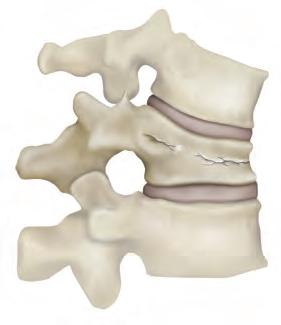
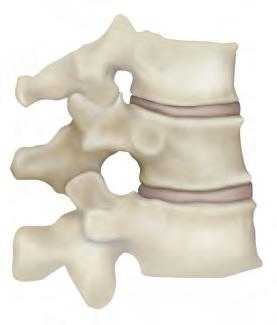
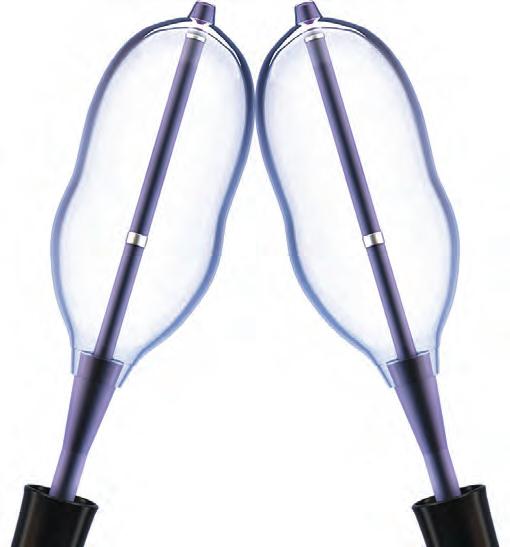
Palmer Law Group, P.C. is a family law, estate planning, and probate law firm that provides legal advice, negotiation, and litigation services to individuals and families who want healthy family relationships; and, for families who want good ways to protect their families and pass their legacy on to their loved ones. CALL (214) 789-4735 TO SCHEDULE YOUR CONSULTATION.
Telephone consultations are available for $197.00 for up to 1 hour. Zoom and in-person consultations are available for $297.00 for up to 1 hour. In-person meetings are available but only by appointment due to Covid-19.
Palmer Law Group, P.C. is a proud member of the SoftDivorce. com©, HardDivorce.com©, PhysicianDivorce.com© and HealthyEstatePlan.com© networks.
“A–DANA C. PALMER
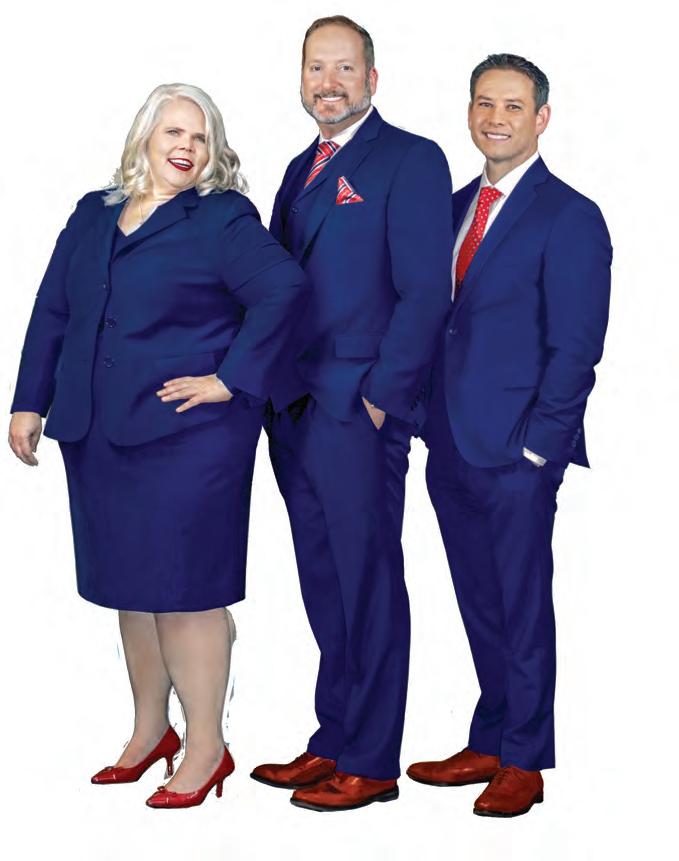
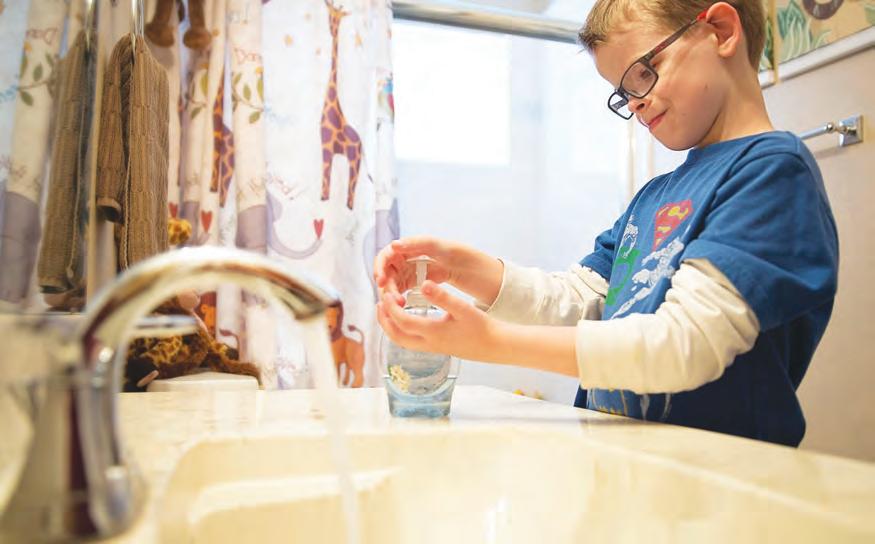

eeping your hands clean is one of the best preventions we can take to keep from becoming ill and spreading germs to others. Many diseases and conditions are spread by not washing hands with soap and clean, running water. Most everyone knows this but yet we’ve all seen individuals rushing out of the bathroom without washing their hands. Yikes!
HOW DO GERMS GET ON TO YOUR HANDS?
Feces (yes, poop) from people or animals is a big source of germs like Salmonella, E. coli O157, and norovirus which cause diarrhea, and some respiratory infections like adenovirus and hand-foot-mouth disease. Germs like these get onto our hands after people use the toilet, change a diaper, and also after handling raw meats that have invisible amounts of animal poop on them. A single gram of human feces (about the weight of a paper clip) can contain one trillion germs. Germs can also get onto our hands if we touch objects that have germs on them because someone has coughed or sneezed on it or if it was touched by some other contaminated object. When these germs are not cleansed offour hands, they are passed from person to person thus making people sick.
PREVENTION OF CONTAMINATION WITH HANDWASHING.
Washing our hands with soap is such a simple task and yet it performs the important and often unappreciated task of removing germs. Ths simple yet important act helps prevent infections because:
• People frequently touch their eyes, nose, and mouth without even realizing it letting germs get into the body making us sick.
• Germs from unwashed hands get into foods and drinks where people prepare or consume them. Germs can multiply in some types of foods or drinks and make people sick.
• Germs from unwashed hands can be transferred to other objects, like handrails, table tops, or toys, remote controls, handshakes, and then transferred to another person’s hands.
• Removing germs by simply washing your hands helps prevent diarrhea, respiratory infections, and may help prevent skin and eye infections.
By GRETCHEN FOSTERAbout 1.8 million children under the age of 5 die each year from diarrheal diseases and pneumonia, the top two killers of young children around the world.
• Handwashing with soap could protect about 1 out of every 3 young children who get sick with diarrhea and almost 1 out of 5 young children with respiratory infections like pneumonia.
• Although people around the world clean their hands with water, very few use soap to wash their hands. Washing hands with soap removes germs much more effectively
• Handwashing education and access to soap in schools can help improve attendance.
• Good handwashing early in life may help improve child development in some settings.
Preventing sickness reduces the amount of antibiotics people use and the likelihood that antibiotic resistance will develop. Handwashing can prevent about 30% of diarrhea-related sicknesses and about 20% of respiratory infections (e.g., colds). Antibiotics often are prescribed unnecessarily for these health issues. Reducing the number of these infections by washing hands frequently helps prevent the overuse of antibiotics—the single most important factor leading to antibiotic resistance around the world. Handwashing can also prevent people from getting sick with germs that are already resistant to antibiotics and that can be difficult to treat.
Teaching people about the importance of washing their hands helps them and the people around them, possibly you, stay healthy.
Go wash those hands!
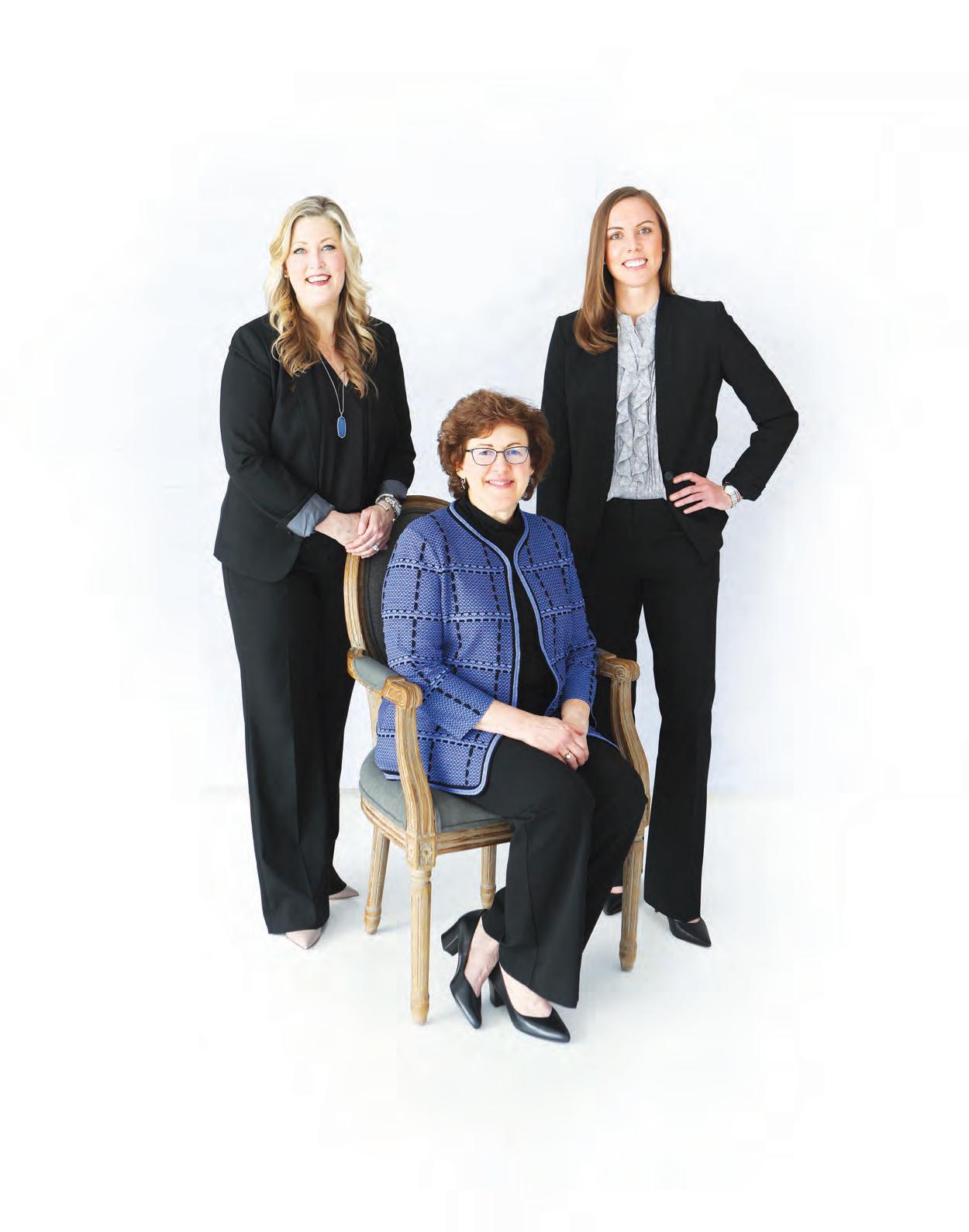
Elder Law is first and foremost about empowering seniors. Elder Law services help you address issues of living arrangements, financial well-being, healthcare options, and the ultimate disposition of assets, enabling you to make your own choices and decisions about managing life as you age.

AREAS OF LAW: LONG-TERM CARE PLANNING
MEDICAID ELIGIBILITY
VETERANS BENEFITS
ESTATE ADMINISTRATION GUARDIANSHIPS
PROBATE LITIGATION
ESTATE PLANNING WILLS & TRUSTS
Losing a loved one is never easy. Many people describe the weeks and months following such loss as “a blur.” After notifying family members, and planning and carrying out the memorial service, comes the question of how to handle the loved one’s estate. Many times, the answer is probate. While the probate process has a reputation for being time-consuming and costly, in Texas, it is relatively quick and inexpensive.
Probate provides for an orderly transition of property ownership following a death. Probate is necessary when an individual who has died owned property that does not pass directly to another individual through beneficary designations. Accounts with rights of survivorship or payable-on-death beneficaries, including life insurance policies, are examples of property that passes directly to a designated individual without the need for probate. Importantly, and despite common belief, title to real property listed in more than one name does not automatically pass to the survivor. Therefore, probate is often necessary to transfer title to the surviving spouse.
Any “interested person” may initiate the probate process. Ths includes anyone having a property right in, or claim against, the estate being administered. Texas has two types of formal probate procedures.
Most probates are handled as independent administrations, meaning the executor or administrator does not have to post a bond or ask the court’s permission before settling the estate. By contrast, a dependent administration is a court-supervised administration. If there is no Will, or if the Will does not provide for an independent administration, then the administration will be “dependent,” unless the beneficaries agree otherwise. Dependent administrations tend to be more expensive, since the administrator must seek court approval for every major decision. However, this added burden and expense may be preferable to protect the administrator if the estate has multiple creditors or feuding beneficaries.
An “executor” is a personal representative who was named in a Will that has been admitted to probate, and who serves in the capacity stated in the Will. An “administrator” is anyone else who is appointed to handle the estate. The individual named in the Will has fist priority to serve as executor. However, the judge may refuse to appoint an individual named in the Will if the judge fids that person to be unsuitable.
Once the judge is satisfid that the Will is valid and the person asking to be appointed executor is a suitable person to serve, the executor will be issued Letters Testamentary, which evidences the executor’s authority to gather assets and act on behalf of the estate. The executor must issue notice to creditors, notify beneficaries, and gather the assets, which the executor must safeguard until the time comes to distribute to the beneficaries. Collecting and protecting estate assets is the primary job of the executor, who should care for the property of the estate as a prudent man would care for his own property. Once the business of the estate has been concluded, assets have been collected, and debts have been paid, the executor may distribute the property to the beneficaries.

In addition to independent and dependent administrations, Texas law allows for another simple probate procedure known as a muniment of title. A muniment of title may be used when an individual died with a valid Will, there are no unpaid debts, except those secured by real property, and the individual was not receiving Medicaid benefits prior to death. Ths proceeding allows for the probate of a Will without the requirement of appointing an executor or administrator, notifying creditors, or filing an inventory, thus making the process easier and less expensive. A muniment of title is not a feasible option if the individual owned property outside the state of Texas or held non-probate assets, such as insurance or retirement accounts, that were payable to the estate, rather than an individual.
There are many factors and variables to consider when determining whether and what type of probate proceeding is appropriate for an estate. A Will remains a valid legal document for four years after death. After that time, if administration of an estate is necessary, it will be handled as if there was no Will. Therefore, if a loved one has died, it is important to contact an attorney who handles probate to discuss which of the various options is best suited to meet your circumstances.
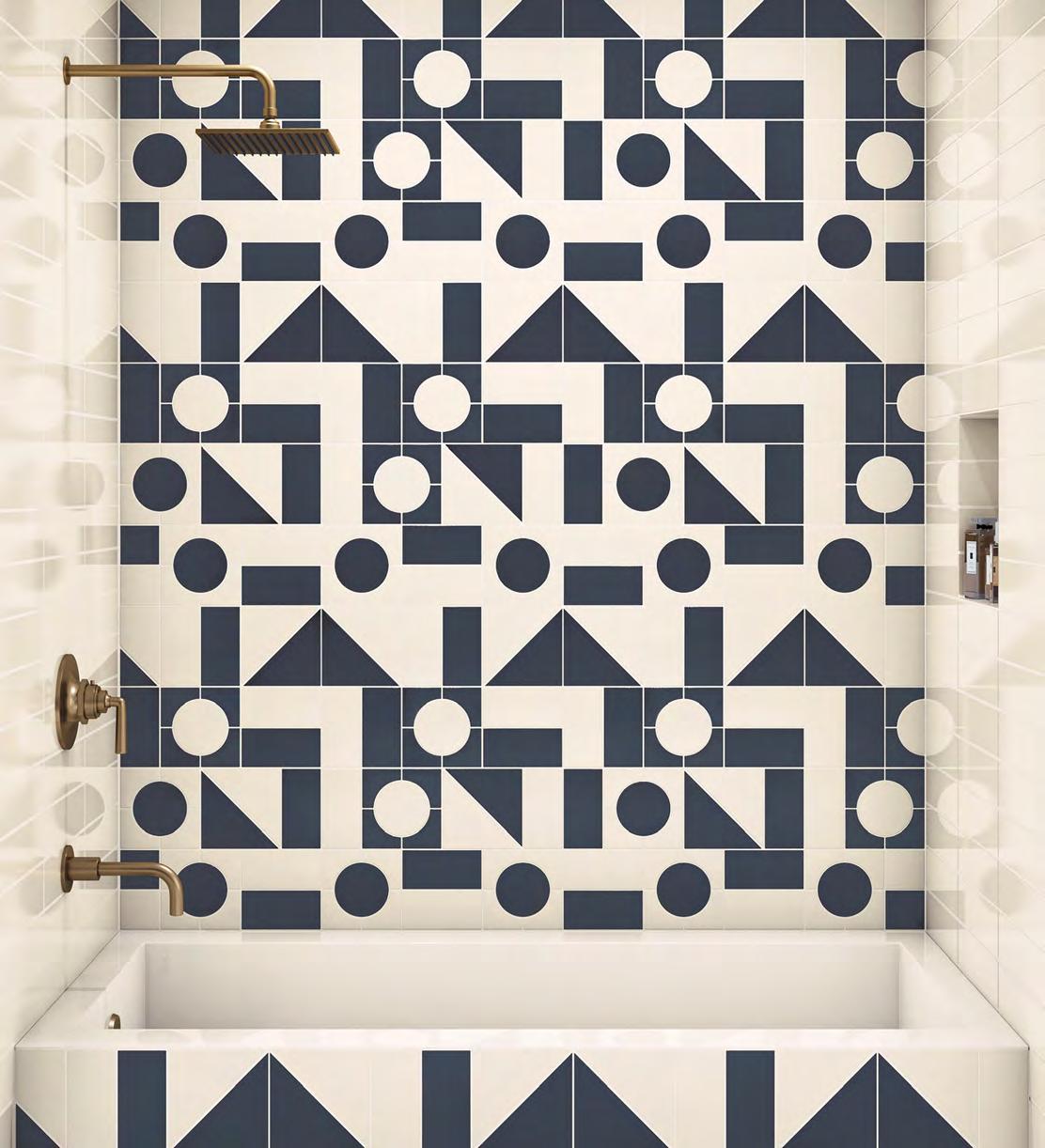

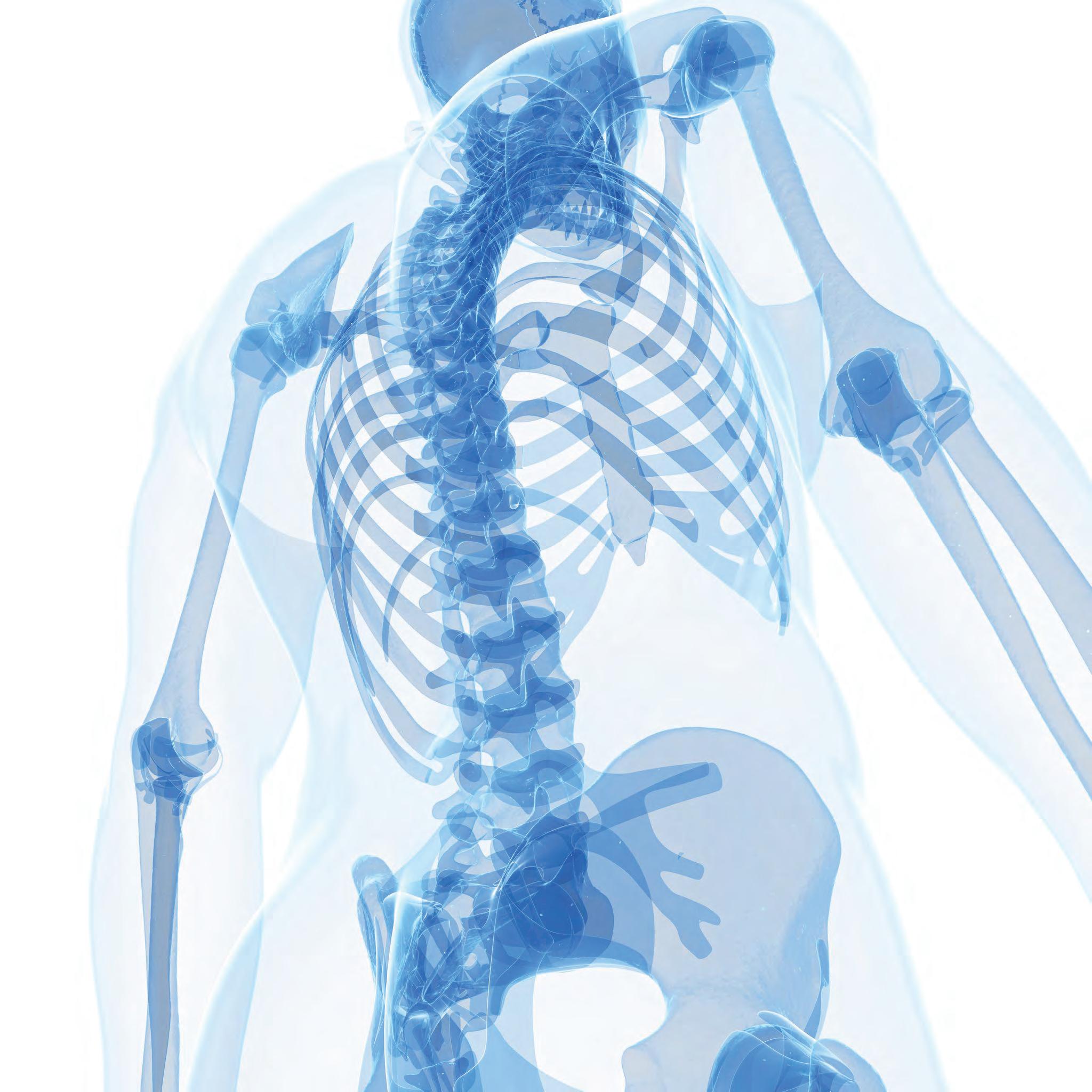 Diane S. Litke, MD Diplomate American Board of Orthopaedic Surgery
Diane S. Litke, MD Diplomate American Board of Orthopaedic Surgery
Dr. Litke is a passionate artist, both in her spare time and as an orthopaedic surgeon. At L&W Orthopaedics, she approaches every orthopaedic problem with an eye toward restoration of function and mobility. With a deep knowledge of the inner workings of the body’s most active and important joints, Dr. Litke is able to repair most hip, knee, and shoulder problems, giving her patients the freedom to move again. Assisting her skilled hands, she uses the latest state-of-the-art robotic equipment for accuracy and precision, delivering a powerful combination of experience and technology to all of her patients.
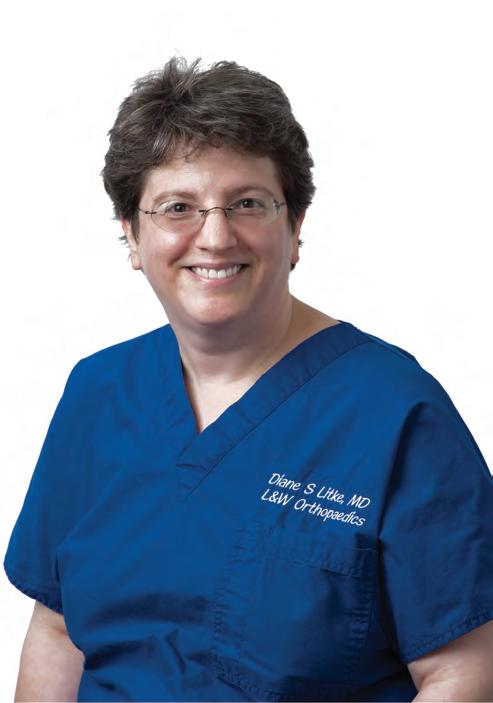
Dr. Litke earned her medical degree at the University of North Carolina Chapel Hill. She went on to complete her orthopaedic residency at the University of South Carolina in Columbia South Carolina. She is certi ed by the American Board of Orthopaedic Surgery, and is a Fellow of American Academy of Orthopaedic Surgery and a Fellow of the American Association of Hip and Knee Surgeons. Dr. Litke is a liated with the Methodist Richardson Medical Center, where she is the director of the joint program. When she’s not working, Dr. Litke enjoys photography and ceramics.
Please call 972.498.4791 to schedule an appointment.
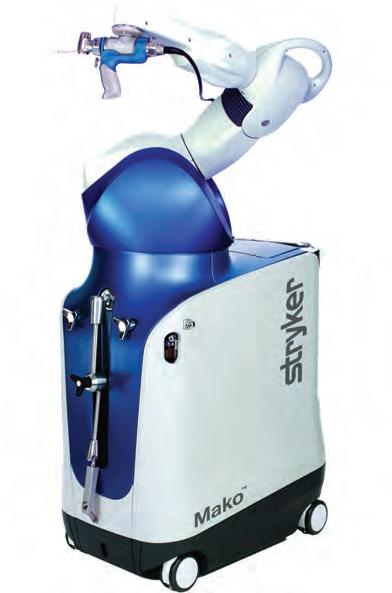
We hear a lot about obstructive sleep apnea (OSA) from both local and national news sources. Some 20 million people suffer with OSA and only 10% are diagnosed. More than 50% of those over 64 have a sleep problem. What is OSA, the causes, effects and how is it treated? I will try to answer these questions so if you or a loved one are aware of the symptoms you can take action.
There are two types of sleep apnea: central and obstructive. Central is less common, occurs when the brain fails to send the appropriate signal to the breathing muscles to initiate respirations. Obstructive is more common and occurs when air cannot flw into or out of the person’s nose or mouth although efforts to breathe continue. In a given night, the number of involuntary breathing pauses or “apnea events” may be as high as 20 to 30 or more an hour. These pauses are usually accompanied by snoring between apnea events, although not everyone who snores has this condition.
During these “events” the person in unable to breathe in oxygen and to exhale carbon dioxide, resulting in low levels of oxygen and increased levels of CO2. The brain senses this imbalance and triggers the upper airway muscles to open; usually a loud snort or gasp will occur. These arousals restart breathing but prevent the patient from getting deep restorative sleep (Stage 4 or REM).
Contributing risk factors for sleep disorders including being overweight, race, gender, smoking, alcohol consumption, high blood pressure, under-active thyroid or some physical abnormality in the nose, throat or upper airway. Sleep apnea seems to run in some families, possible genetic basis.
Loud disruptive snoring cessation of breathing during sleep, waking up gasping, morning headaches, grogginess, dry mouth, frequent nighttime urination, moodiness and irritability. Ths pretty much is how I feel after staying out late and my grandkids wake me up early.
Leftuntreated OSA can lead to serious health conditions,
including physical, emotional consequences and an increase in accidents. The effects are excessive daytime sleepiness, poor concentration, irritability, possible depression, memory difficulties and increase stroke or heart attack risk. Long term is the strain untreated OSA places on the body along with the “link” to other medical conditions; CHF, nocturnal arrhythmias, Type II diabetes, hypertension and stroke.
As one who has OSA, I understand the ways that I coped to deal with my being sleepy during the day, not realizing how tired I was in the morning. It was my wife and my involvement with various respiratory manufacturers that led me to visit my doctor. I had a complete physical, answered several questions and was referred to a sleep physician specialist. I along with my wife completed a detailed questionnaire and after another meeting, it was agreed that I should have an overnight sleep study. Ths is a painless overnight exam that monitors one’s sleep; electrodes and sensors record all brain activity, eye movements and breathing functions. Ths will help determine the type and frequency of the sleep disorder that may be occurring nightly.
In cases of mild sleep apnea, certain lifestyle changes can sometimes achieve positive results. Exercise and proper sleep habits, oral appliances, avoiding alcohol and sleeping pills (make throat muscles relax) or sleep on your side. The most common and successful method is through continuous positive airway pressure (CPAP) device. In this procedure, a mask is worn at night over the nose or mouth and the air pressure will keep the airway open while you’re asleep. The pressure setting is based on the sleep study. From experience, the mask fitting is crucial to achieving success and compliance. The goal of the provider is to work with the patient to determine the best interface that will allow the patient and their bedmate to sleep comfortably. Once this is determined, follow up, encouragement and support is needed from the health team and spouse to stay compliant with the treatment.


